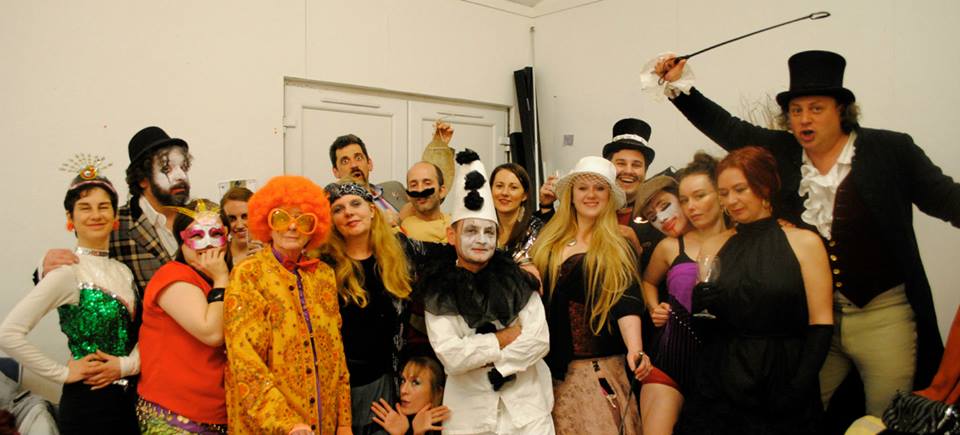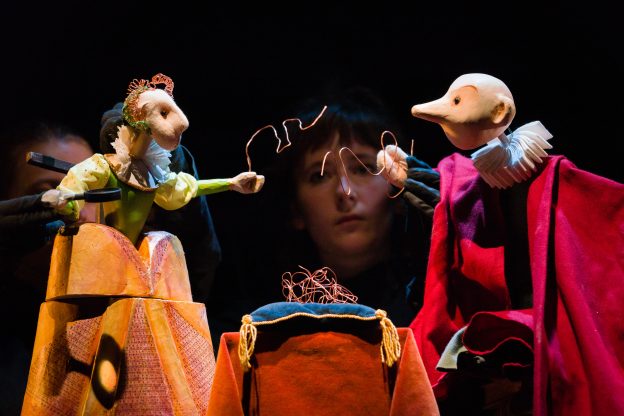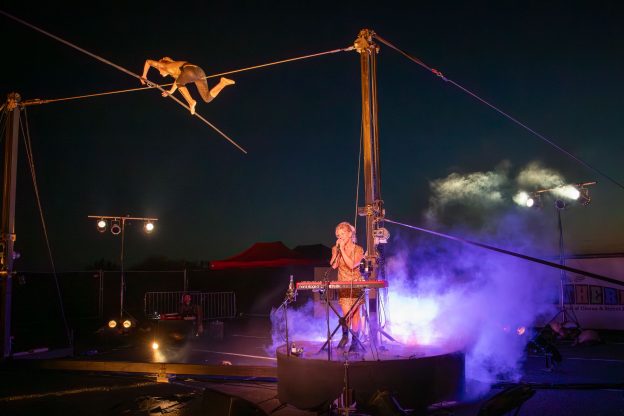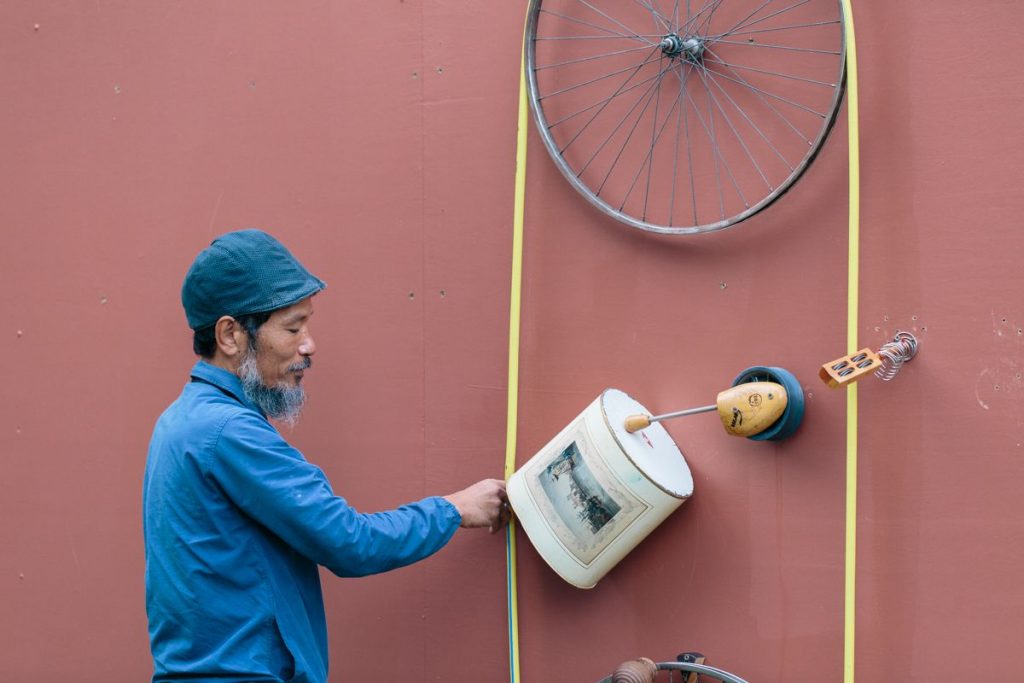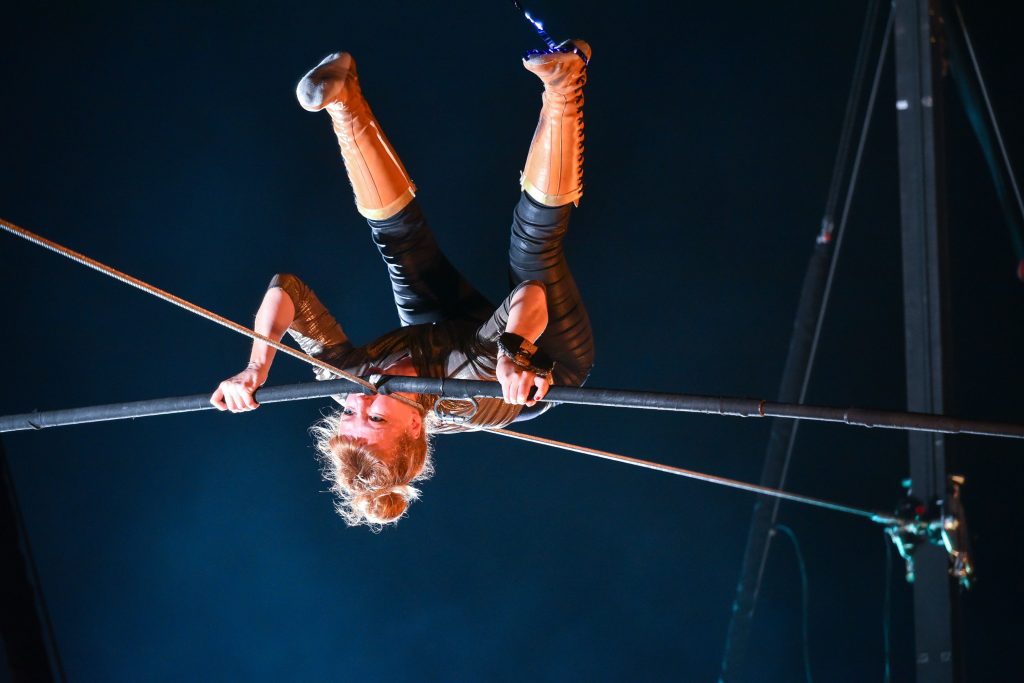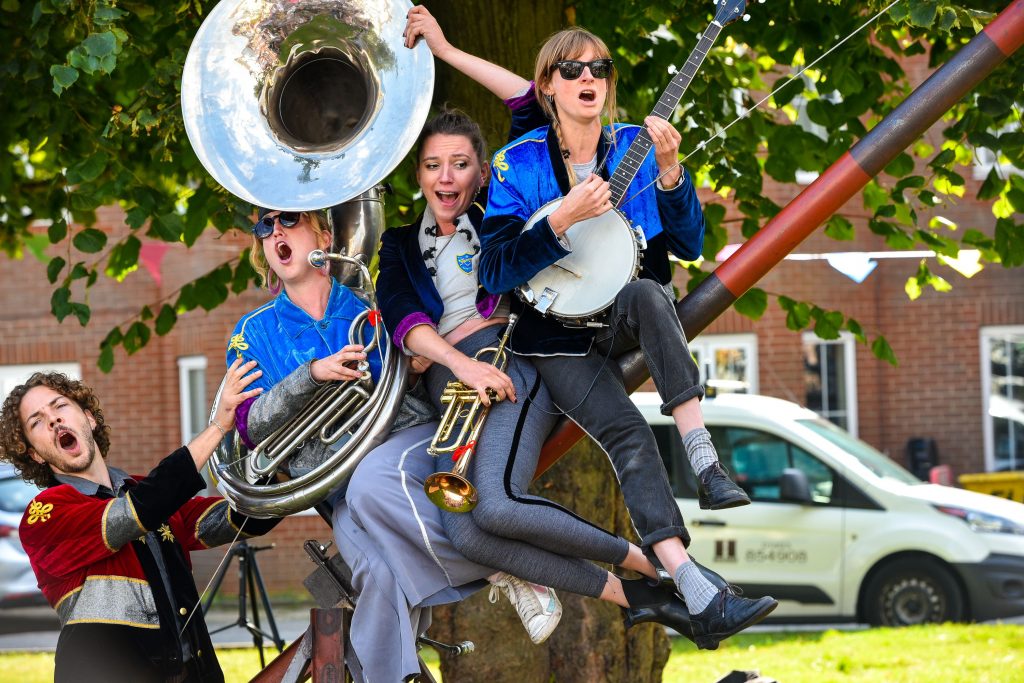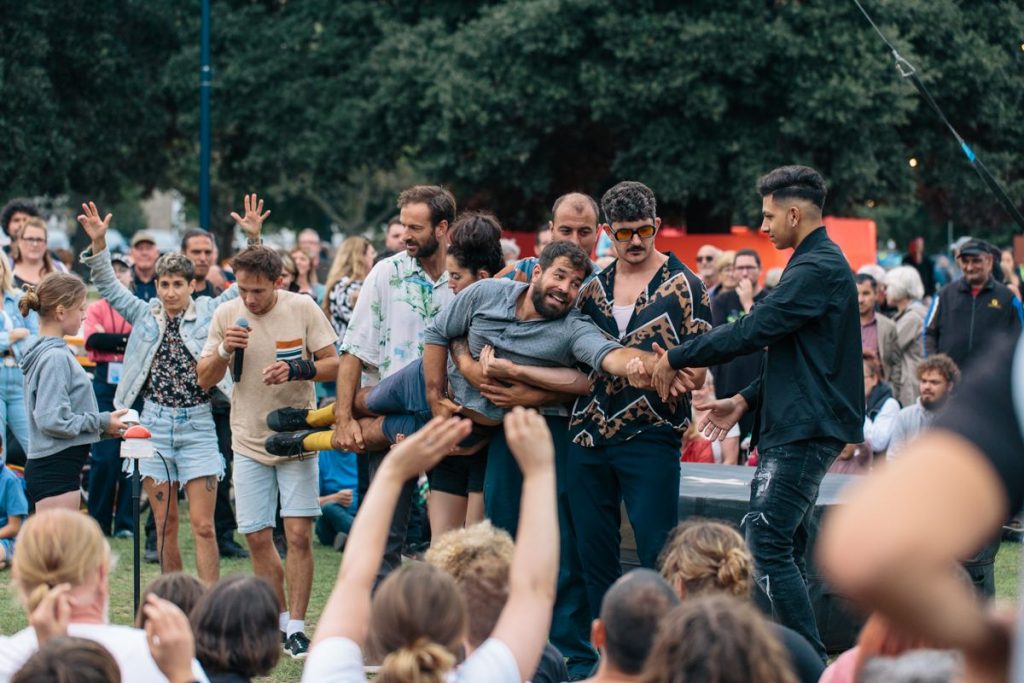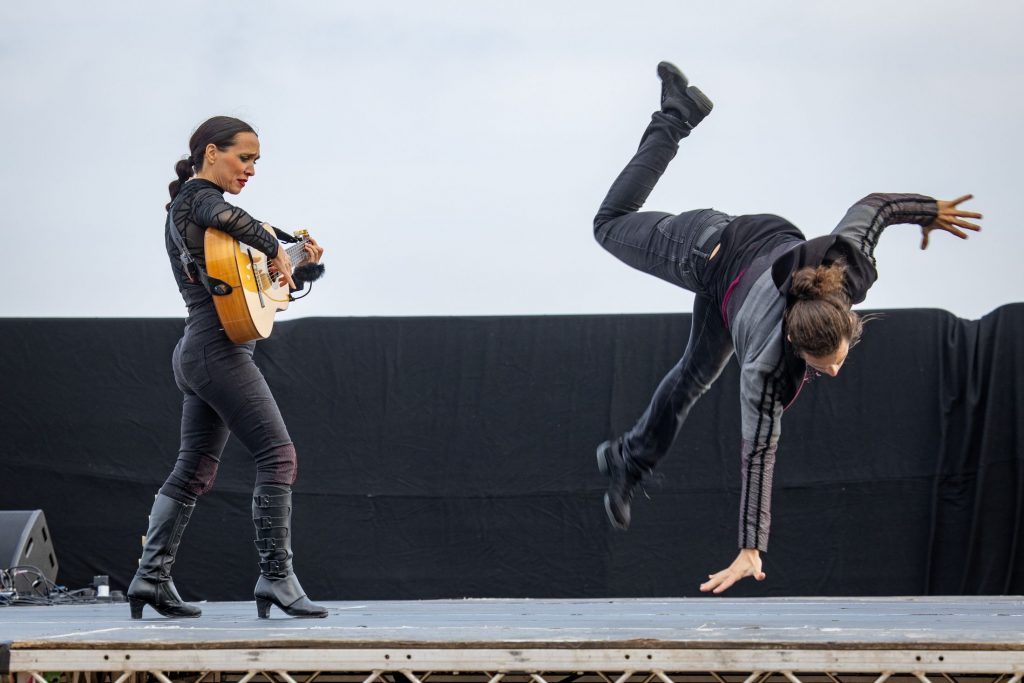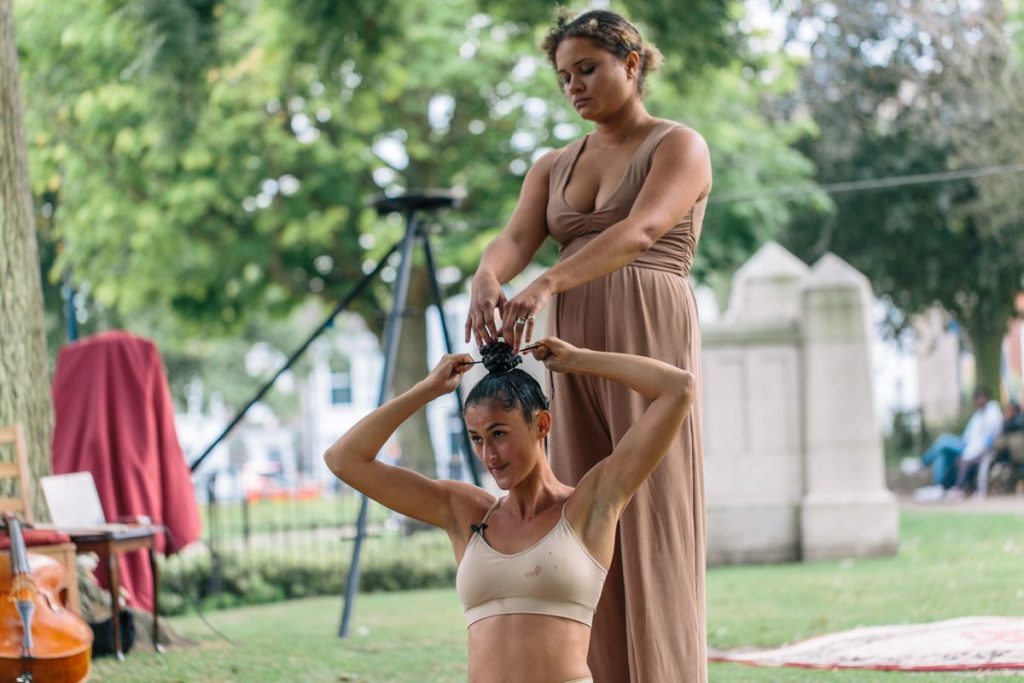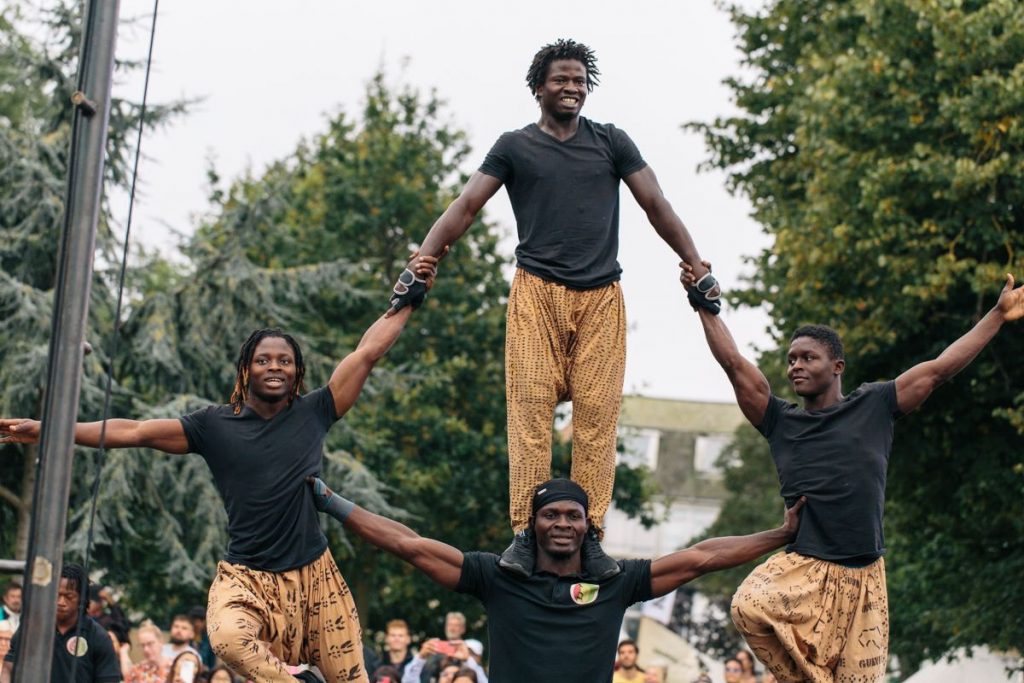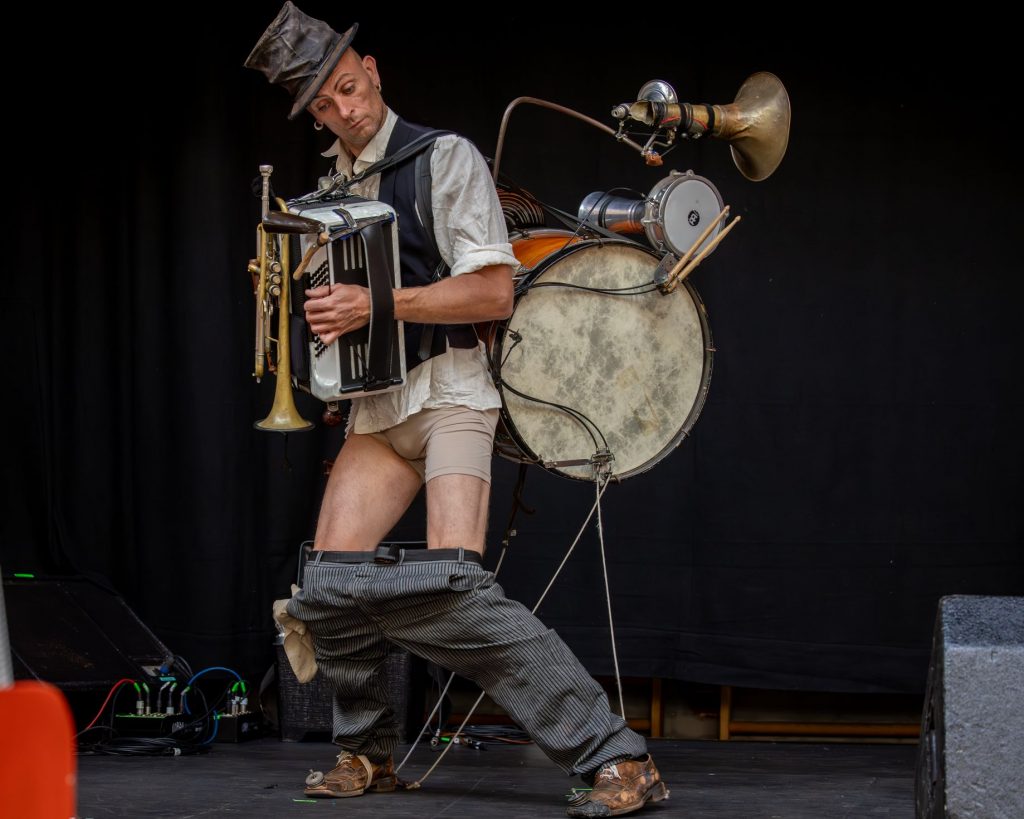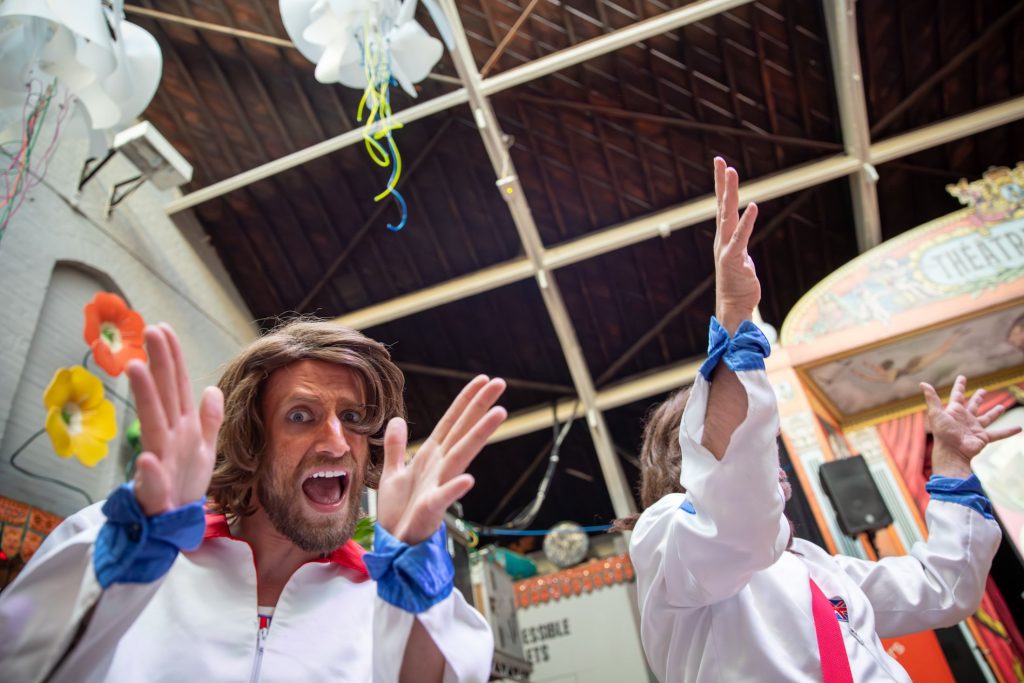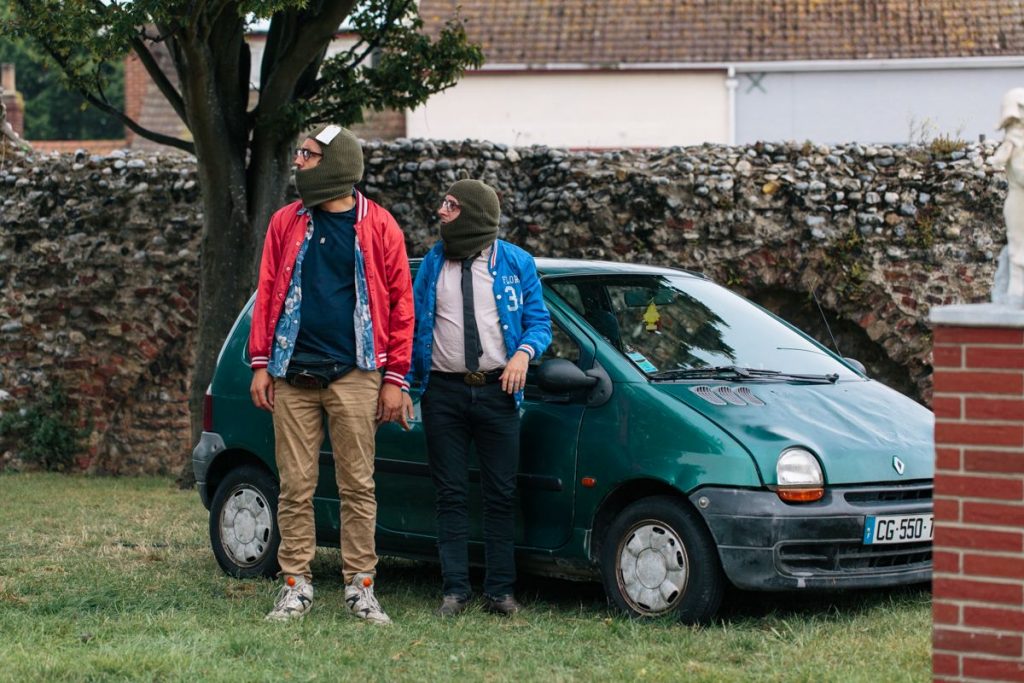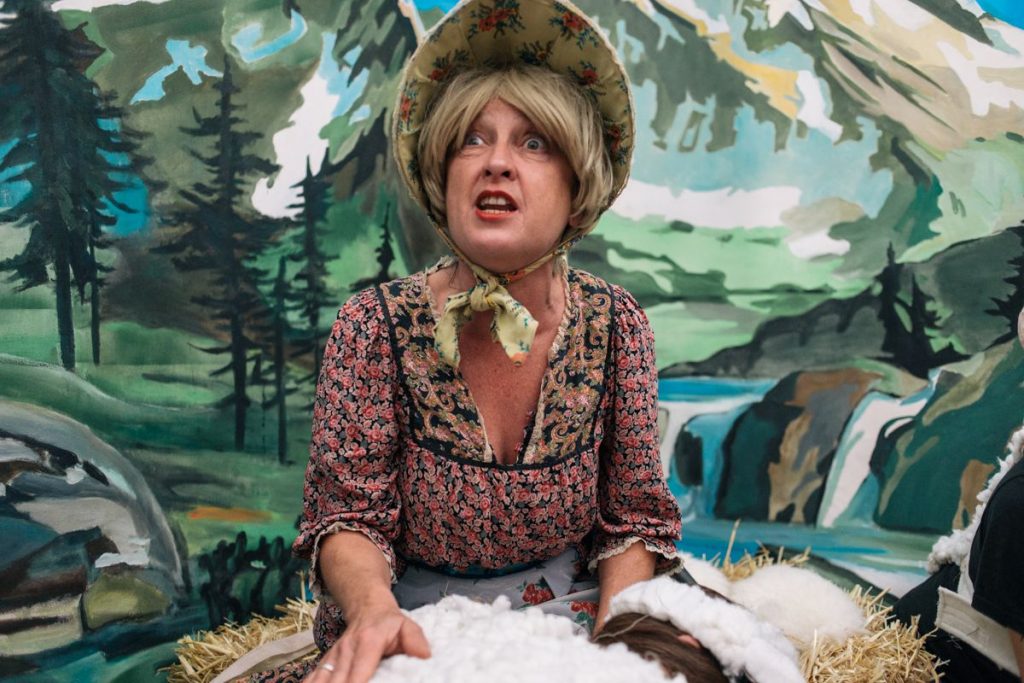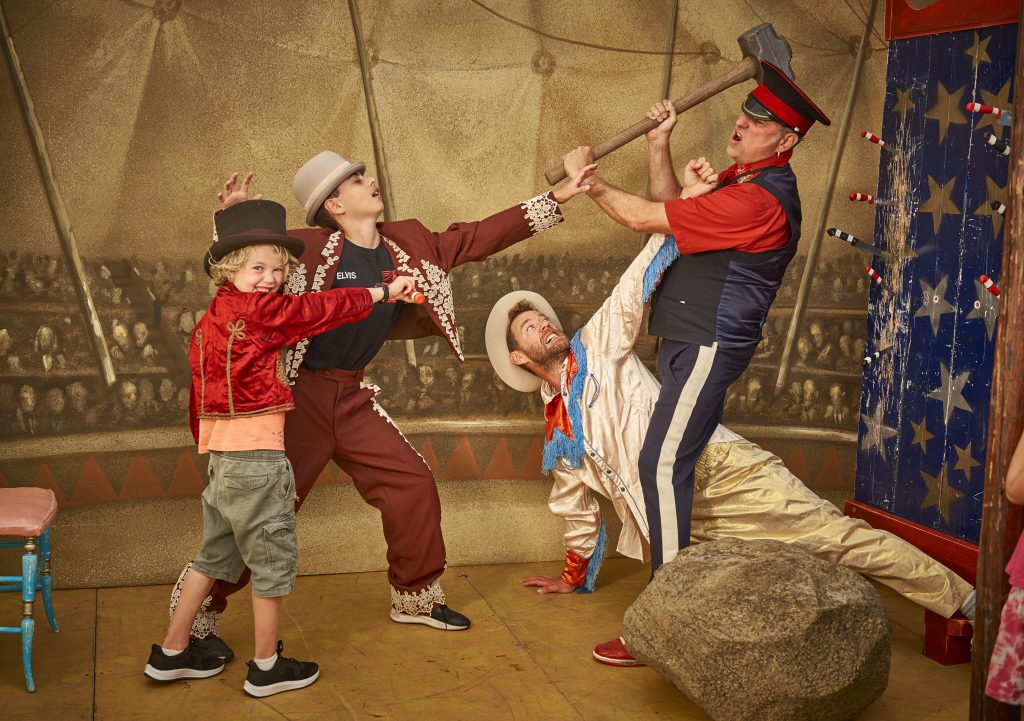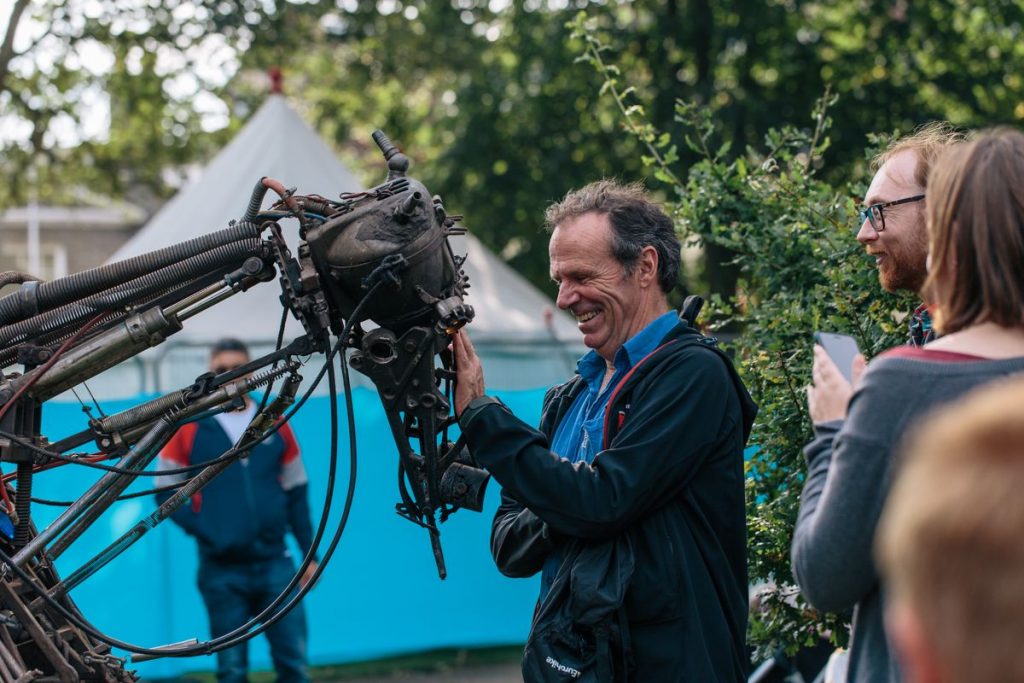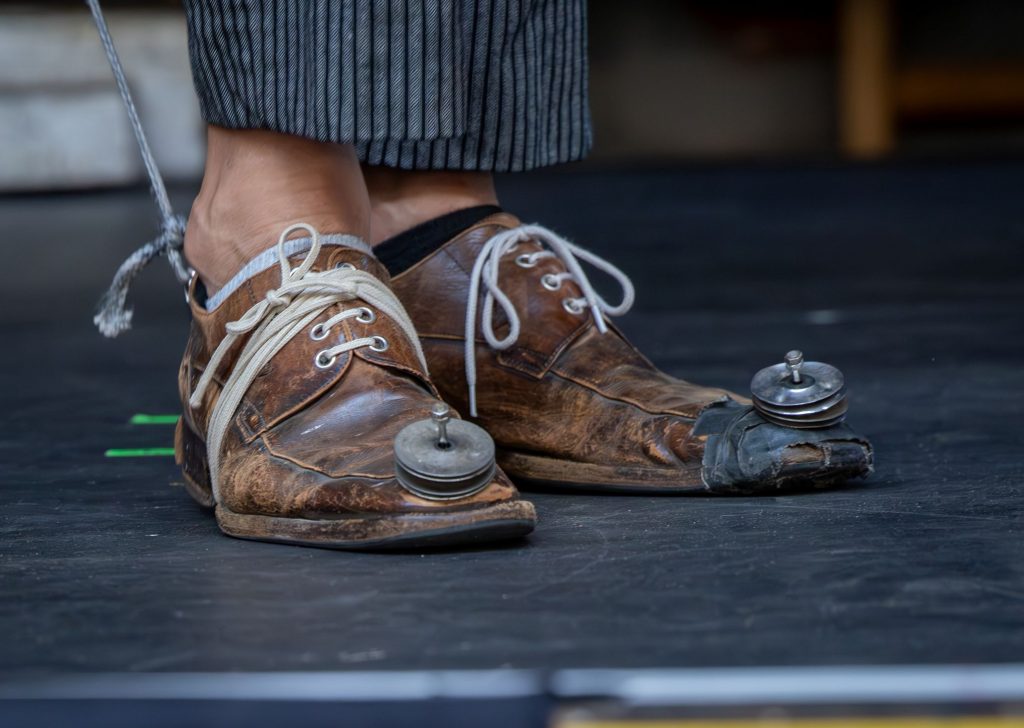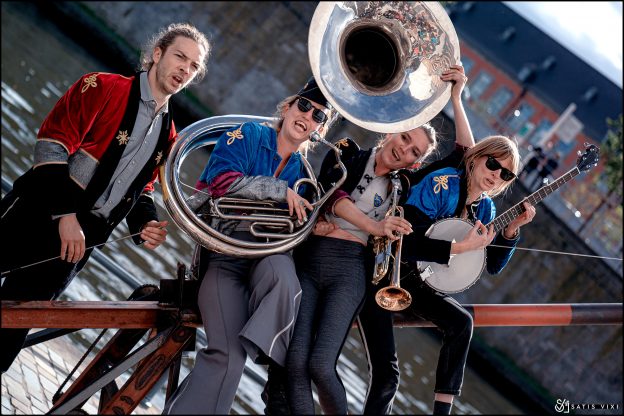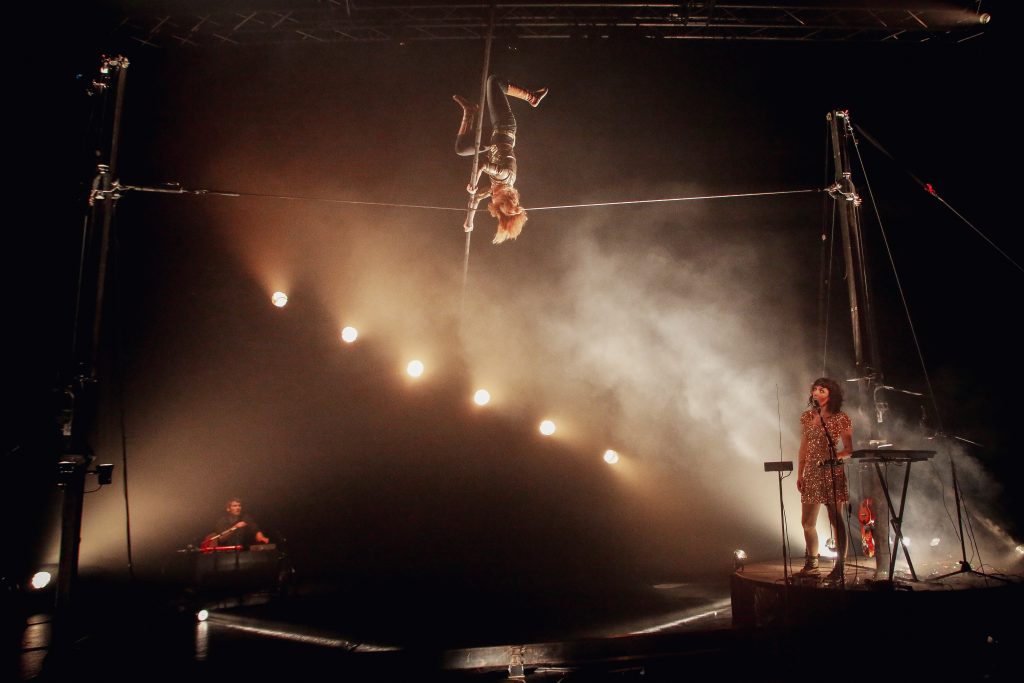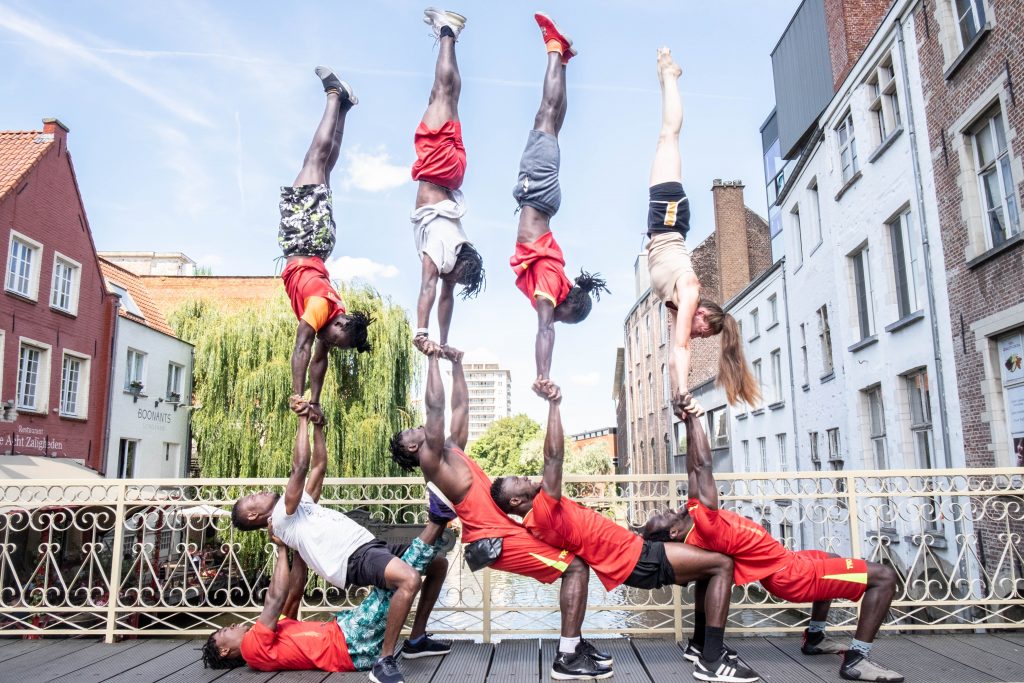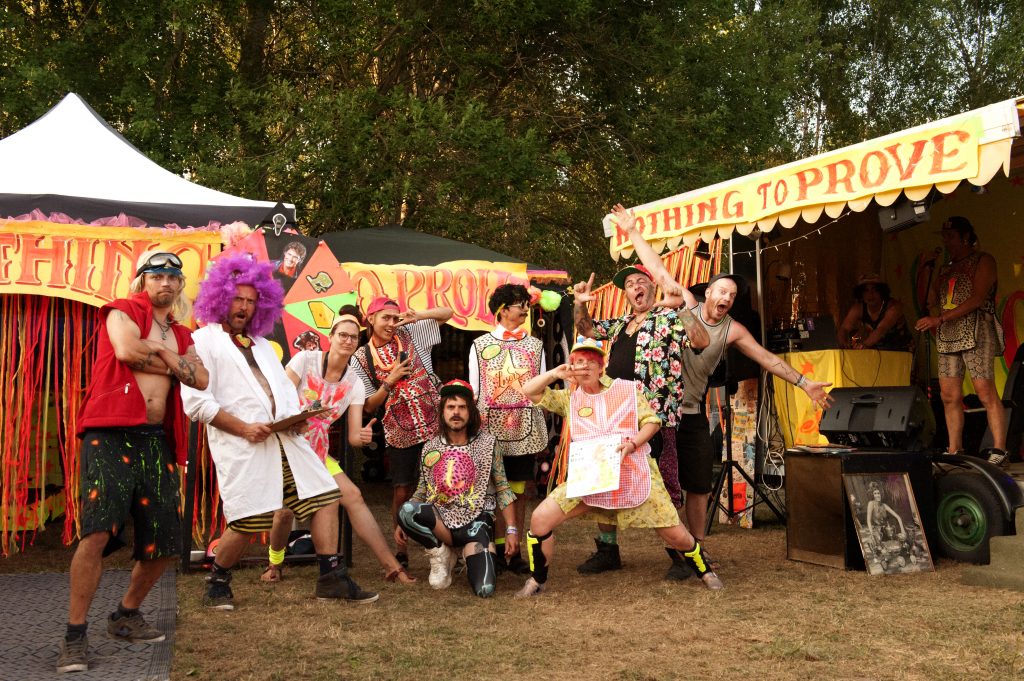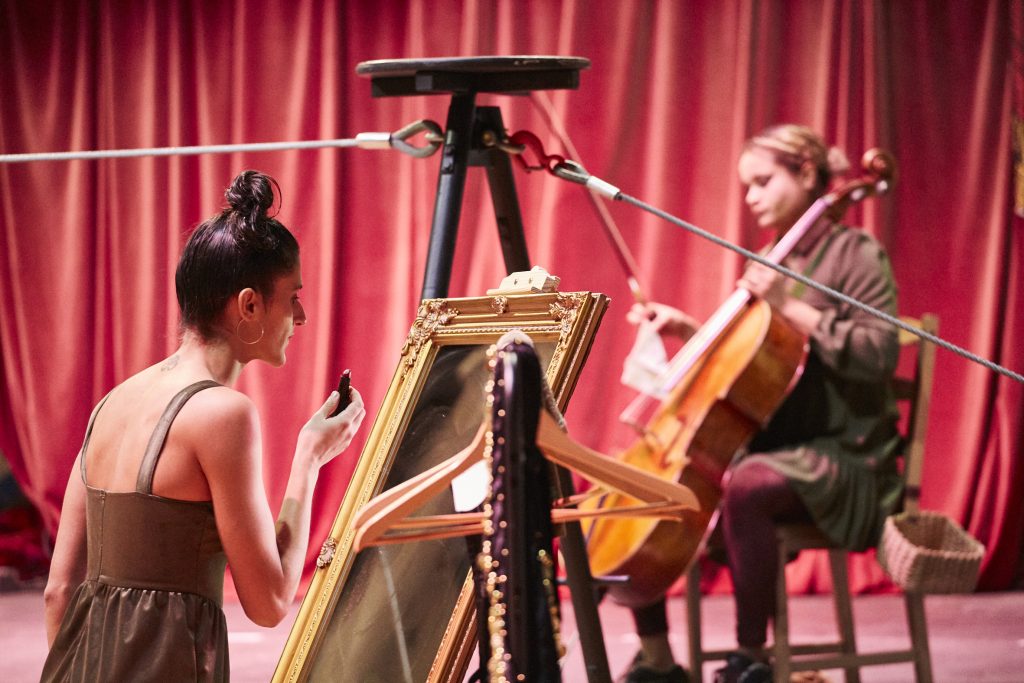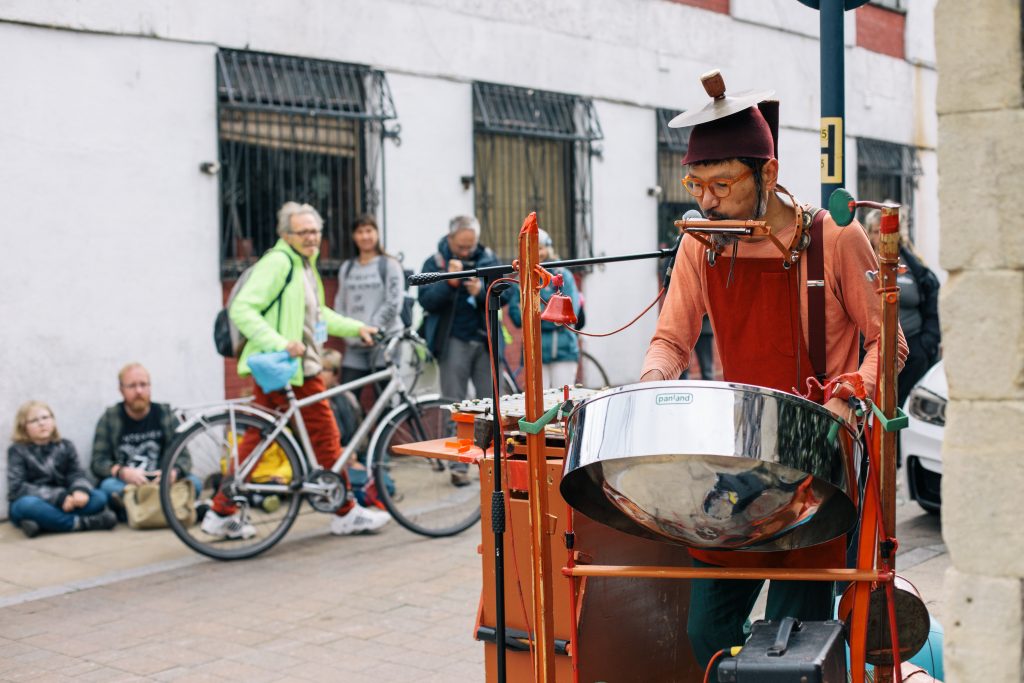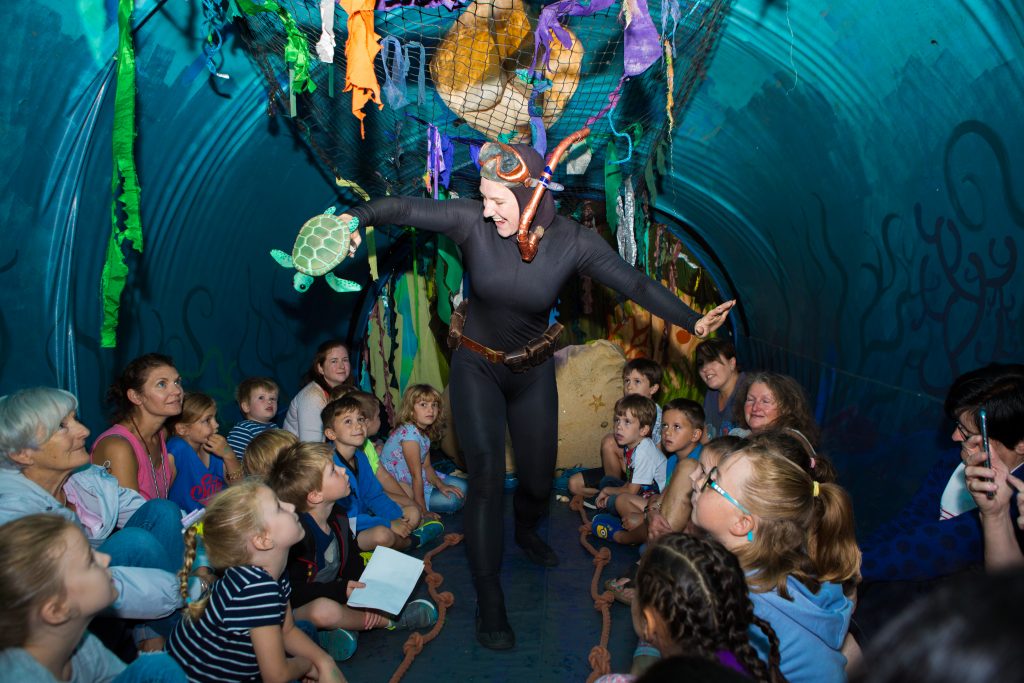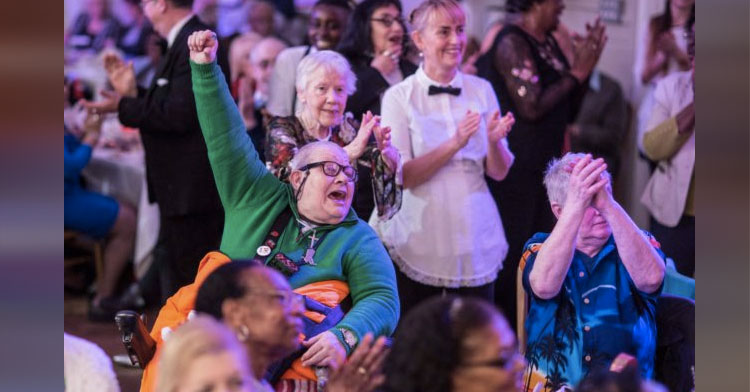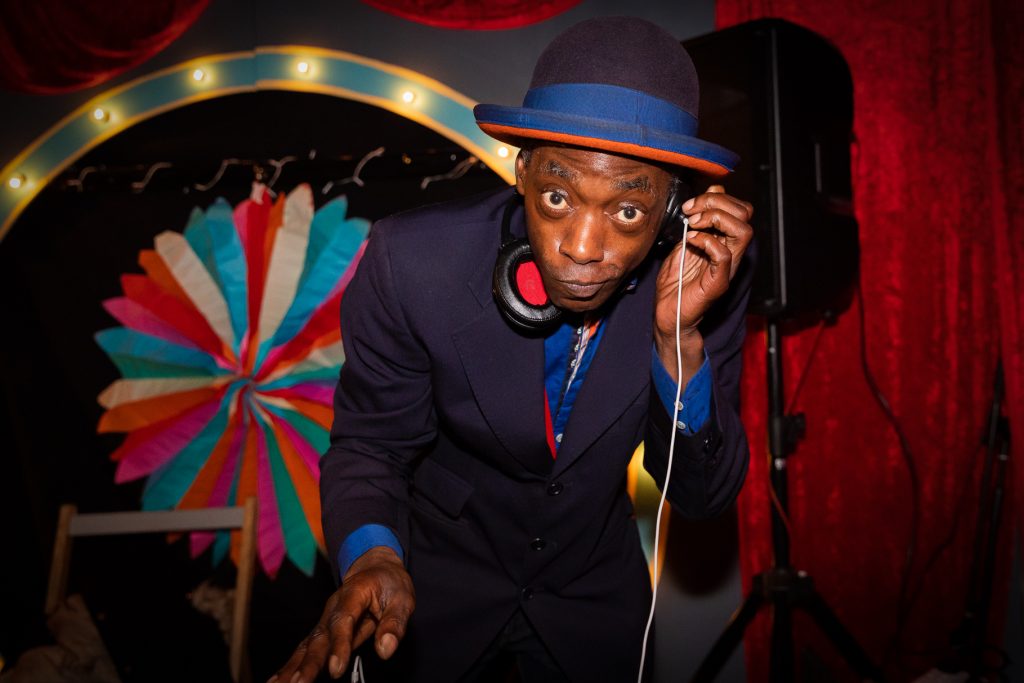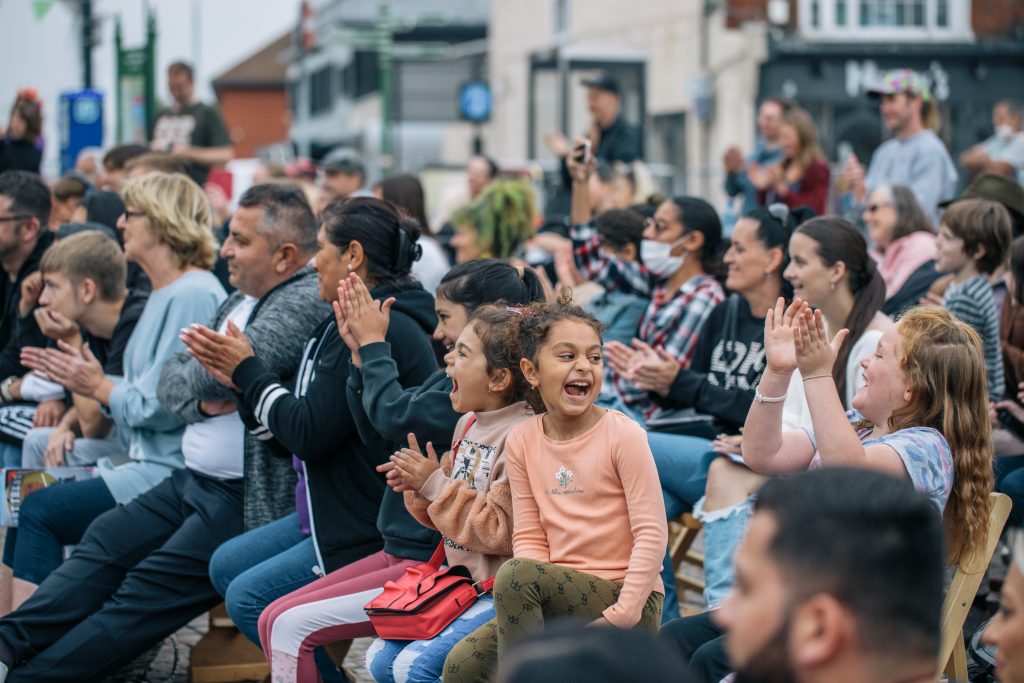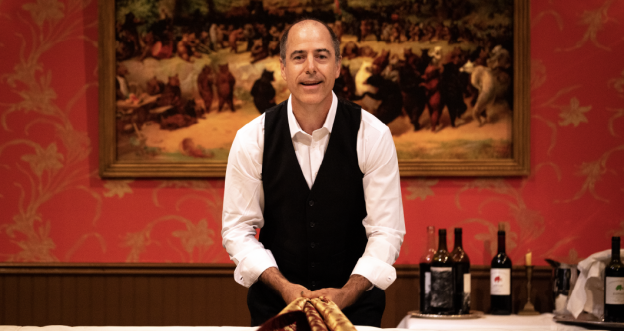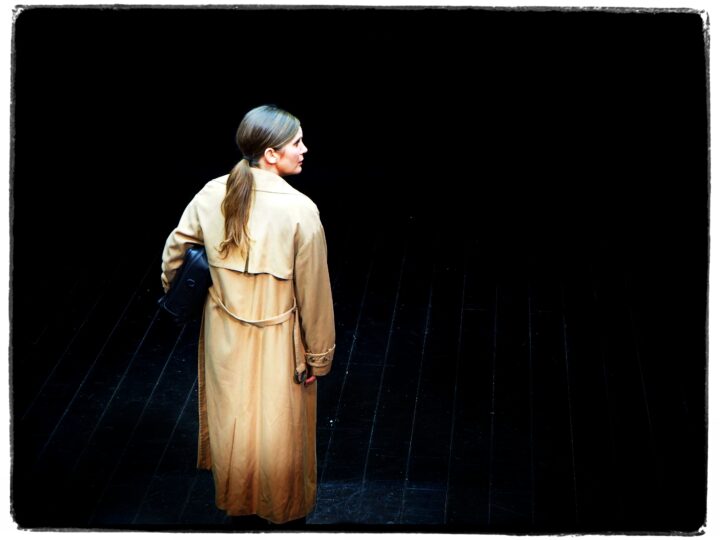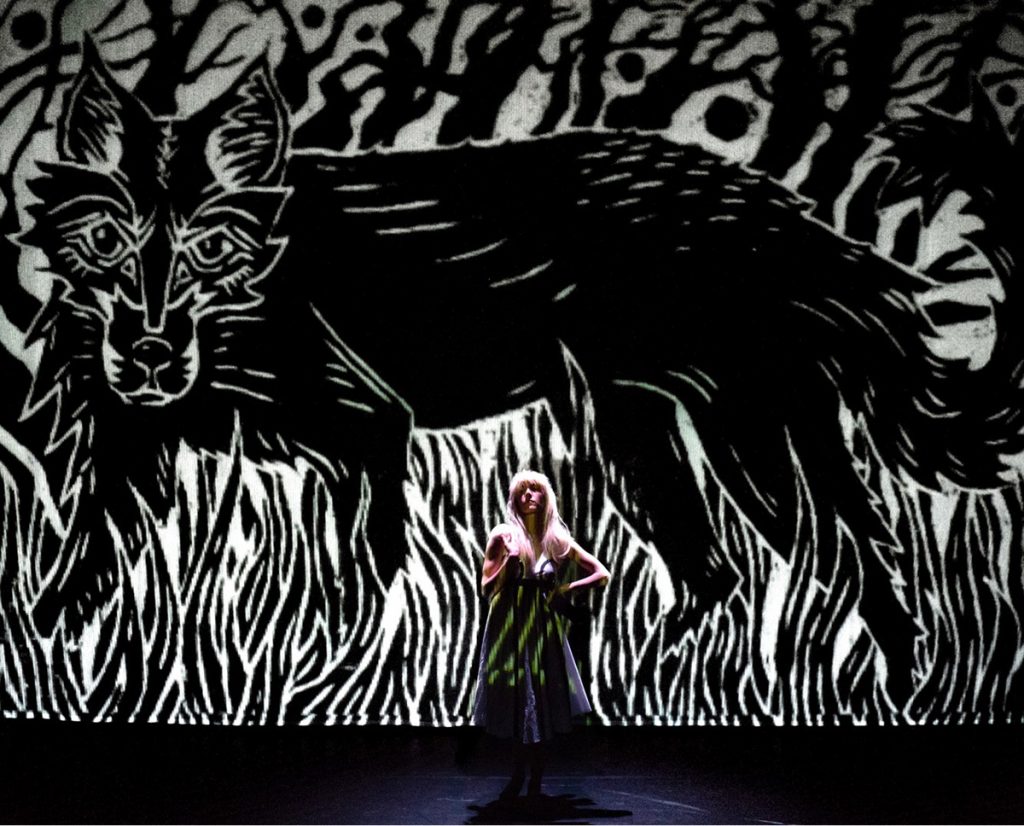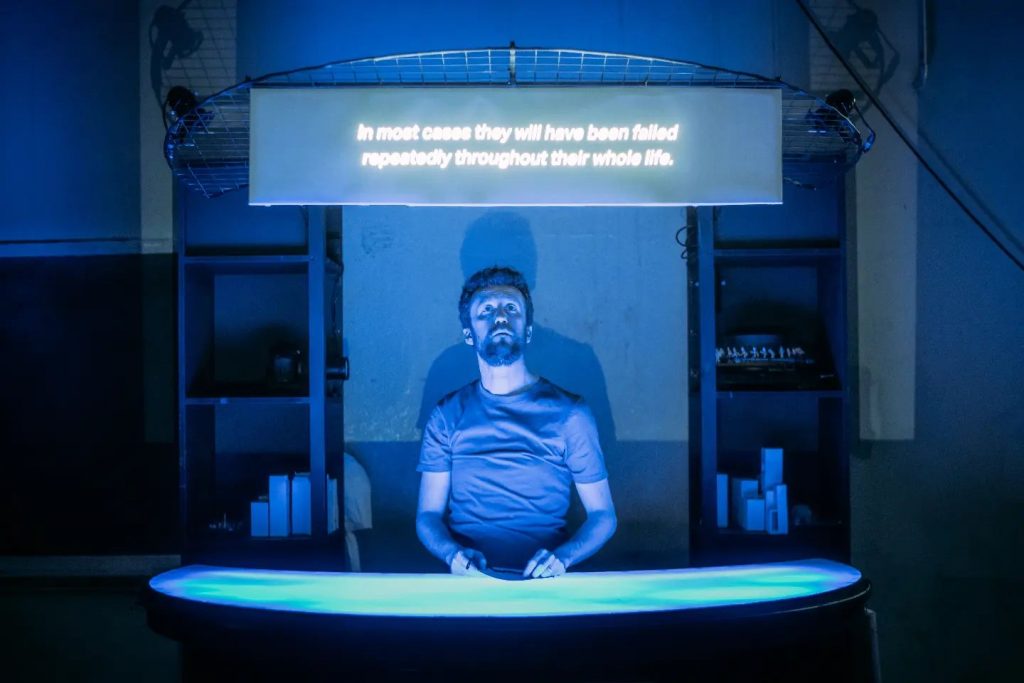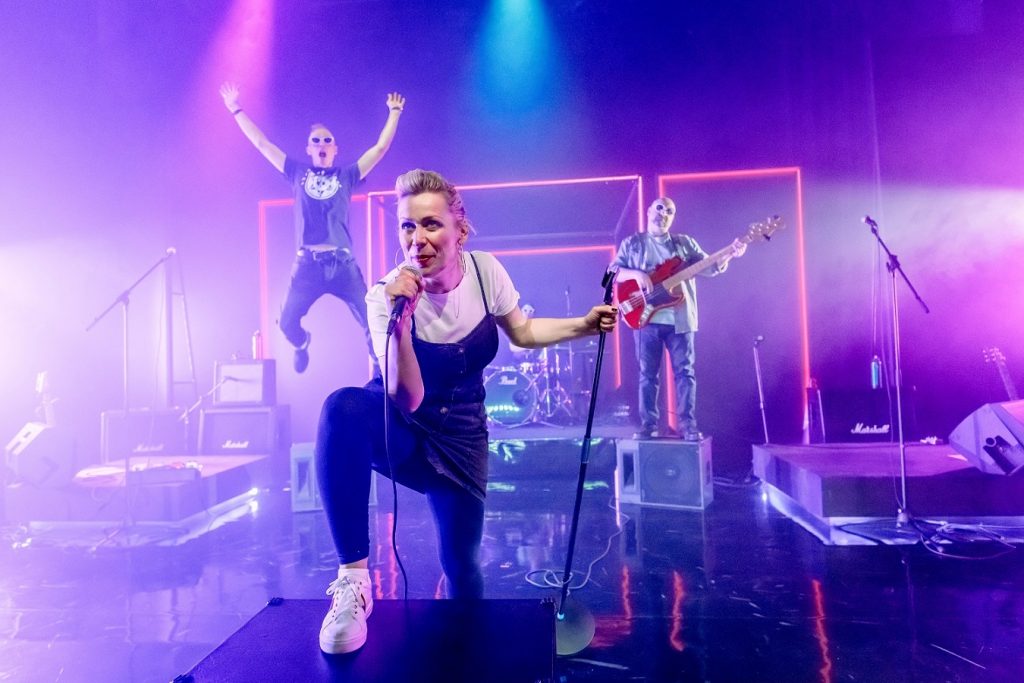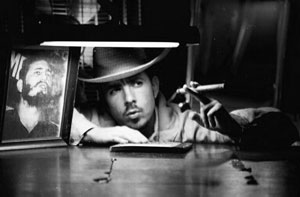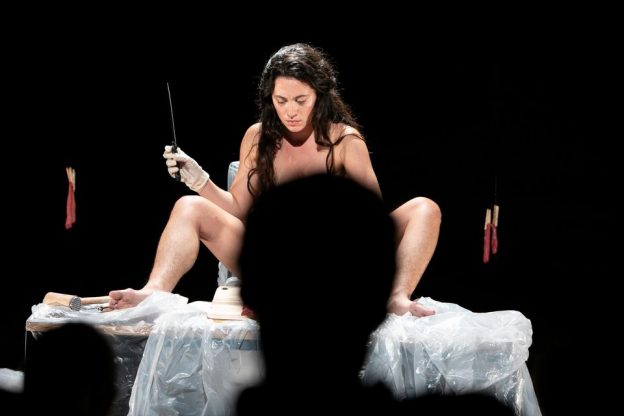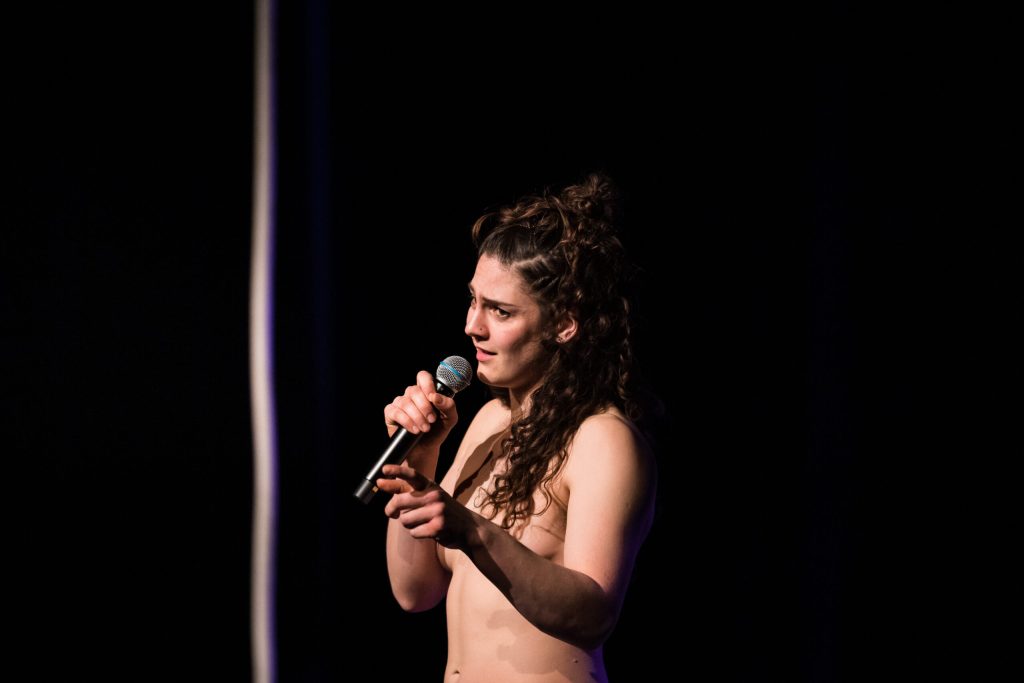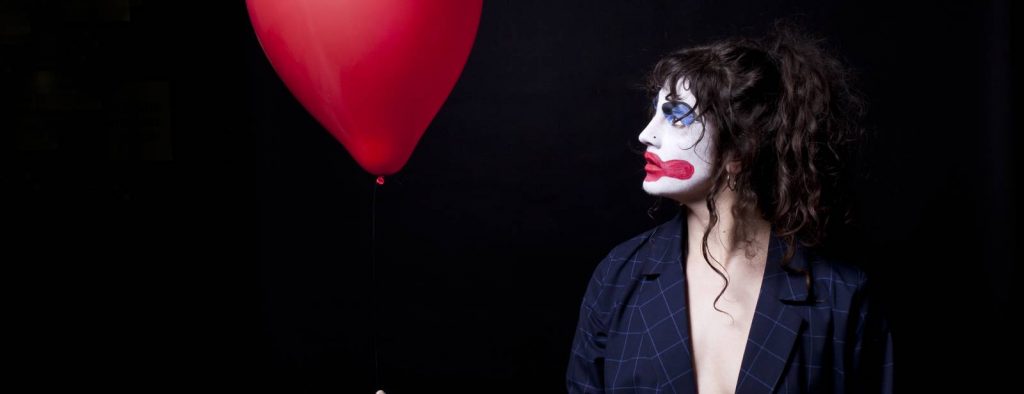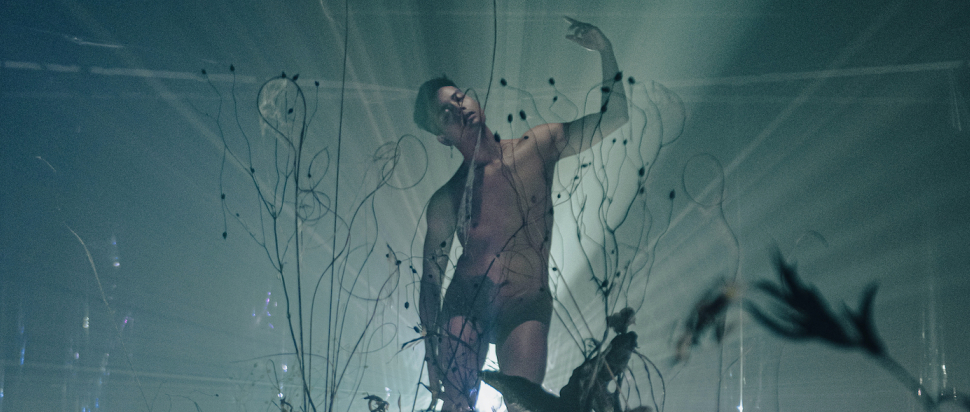An appreciation of Penny Francis, MBE who died in June 2023. Dorothy Max Prior and a host of other friends, former students, and colleagues from the world of puppetry and visual theatre tell us what the incorrigible Doyenne of Puppetry meant to them.
We have lost our Queen!
Dear Penny Francis has left the building.
That’s Penny Francis, founder of the Puppet Centre Trust, and a tireless advocate and supporter of puppetry for seven decades.
Penny Francis, educator, puppetry tutor, and lecturer on the prestigious MA in Advanced Theatre Practice at the Royal Central School of Speech and Drama.
Penny Francis, writer and editor, author of Puppetry: a Reader in Theatre Practice, and tireless translator of the works of her friend Henryk Jurkowski; founding editor of Animations magazine, contributing editor of Animations Online and Animations in Print, and long-term contributor to Total Theatre Magazine.
When I asked people to send in their appreciations of Penny, the same words and phrases popped up again and again: Penny, we all agree, was a legend, formidable, an inspiration, dedicated, funny, enthusiastic, independent, open-minded, supportive. There again, she could be strongly opinionated – and sometimes a harsh critic. She was never afraid to speak her mind. She radiated ‘fierce intelligence, determination, and sparkling optimism’ says chair of the Puppet Centre Trust, Mervyn Millar.
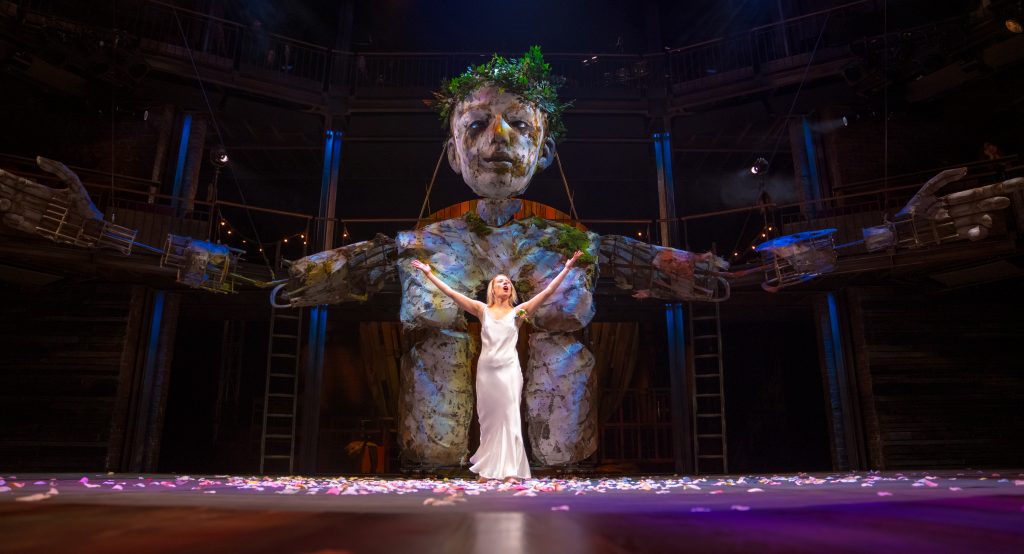
The last time I saw Penny in person, I went to her house in Bromfelde Road in Clapham for afternoon tea. When I arrived at 4pm, clutching flowers, wine and cake, she said, ‘Oh never mind the tea, let’s open the wine!’
Like many of Penny’s friends and colleagues, I have fond memories of this house, having drunk many a cup of tea and glass of wine in the comfy sitting room that overlooked her pretty walled garden. At other times, we might be sat at her table tucking in to an Indian take-away after an Animations editorial meeting; or gathered around the piano in the front room on a winter’s evening, singing Christmas carols whilst Penny thumped the keys.
Her funeral was, of course, a very sad occasion but a splendid tribute to Penny, featuring Music Hall songs and puppetry alongside the more traditional hymns and eulogies. I was pleased that we got invited back to her house afterwards. Just to see her piano one more time was such a pleasure, and to drink a glass of her favoured white wine as we swapped memories and anecdotes – many of which seemed to revolve around Penny’s erratic driving and bizarre parking choices.
When looking through my old emails, I find that the last one I received from Penny had the subject line ‘Do Come With the Chablis Soon’. As always, it was addressed to ‘Maxie Waxie’ and signed ‘Henny Penny’. As with so many of people who knew Penny and remember her here, what had started as a work connection had turned into a rich longterm friendship that had lasted until she died.
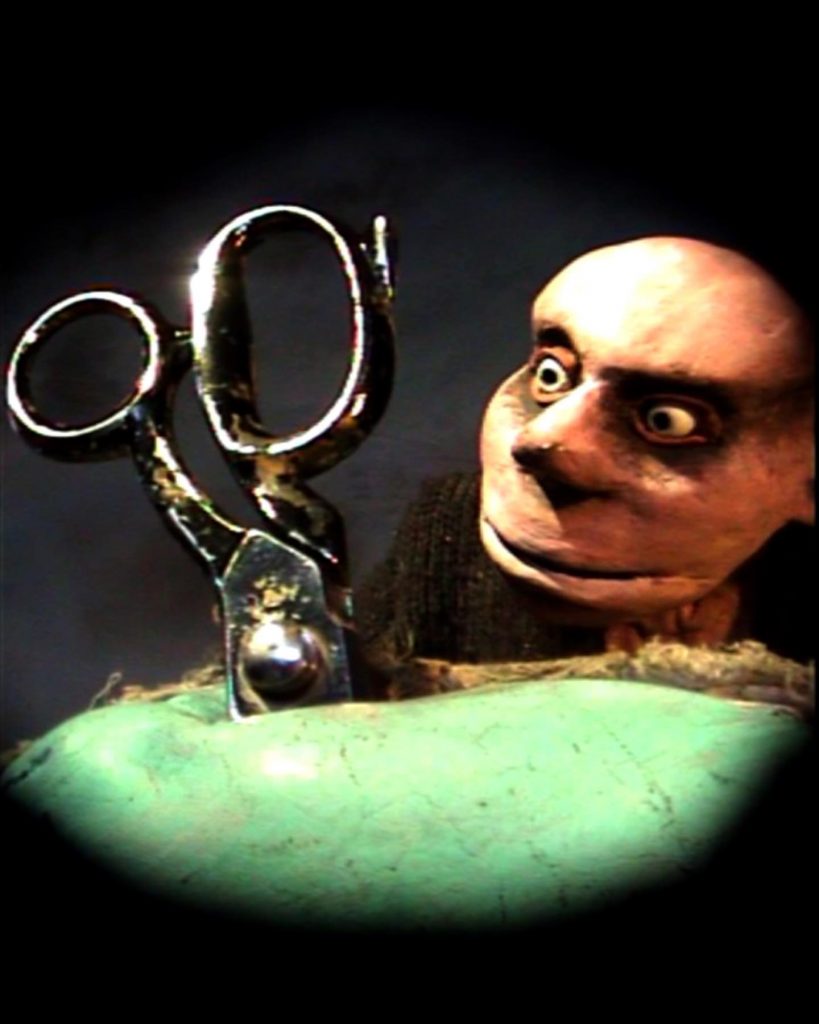
I’m trying to remember how and when I first met Penny. When I was appointed editor of Total Theatre Magazine in 2000, I ‘inherited’ Penny as a regular contributor, and advisor to the editorial board. But I’d met her before then, I know I had. She seemed to always be there.
Perhaps I first met her at the Puppet Centre at Battersea Arts Centre. I lived around the corner for a few years in the mid- to late-1980s, and frequently visited this fabulous storehouse of puppets,where you might find anything from Bagpuss to Balinese Wayang Kulit. My baby son Gabriel loved going there. He grew up to be the Animations Online designer, before going on to become a film-maker, always praised and encouraged in his work by Penny, who was a fantastic supporter of talented young people.
Then again, I had probably been introduced to Penny sometime in the 1990s at a London International Mime Festival show. This annual festival ran from 1977 to 2023, showcasing the best of the world’s visual theatre, including puppetry and animation, and Penny was a vociferous supporter, and sometime advisor.
‘We loved Penny. What a star! What a loss,’ say LIMF directors Helen Lannaghan and Joseph Seelig. ‘She supported our festival from the outset, with friendship, and with recommendations of unusual puppetry seen on her travels. And she’d seen everything. She was clever and determined, sparkling fun and always great company. Forever youthful. We miss her.’
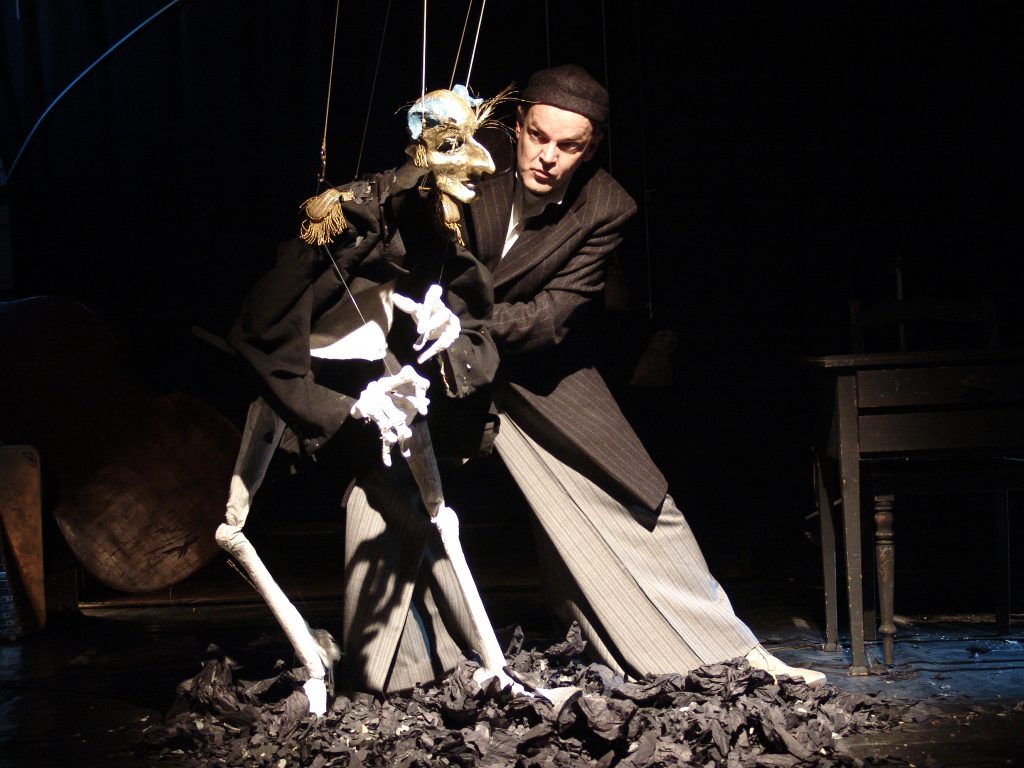
I do remember attending a Puppet Centre meeting at BAC, where the then-director of the venue, Tom Morris, asked if anybody might be interested in joining with Penny Francis to discuss the re-launching of Animations magazine. I put up my hand. Just a few days later, Penny turned up at Total Theatre HQ at Circus Space in Hoxton, with an emerging puppeteer called Mark Down in tow. Mark knows all about websites, Penny says by way of introduction, and we think that we could re-launch Animations as an online magazine, with you as editor. It was clear that saying no wasn’t an option. So we did, the three of us, with no finances or other resources.
Mark was one of Penny’s former students. Anyone who entered her orbit tended to stay there – she seemed to collect people (as well as puppets). He’d first encountered her when he auditioned at Royal Central School of Speech and Drama in 1995:
‘She waved her hands in the air animatedly and told us all, “I’m the puppetry tutor!”. I didn’t know what a puppetry tutor was. I found out that it was someone who suggests you use puppetry in all your projects, at every opportunity, and as much as possible. And I took her advice. After drama school, when I was very ‘out of work’, Penny put my name forward for jobs involving puppets, she invited me to puppetry conferences, she introduced me to people who did puppets, she invited me to birthday parties with puppets, and she asked me to join the board of the Puppet Centre Trust. She did the same, I believe, for and to countless other people (and puppets) over many generations. To me she was puppetry tutor, puppetry mentor, and puppetry friend. She was a force of nature.’
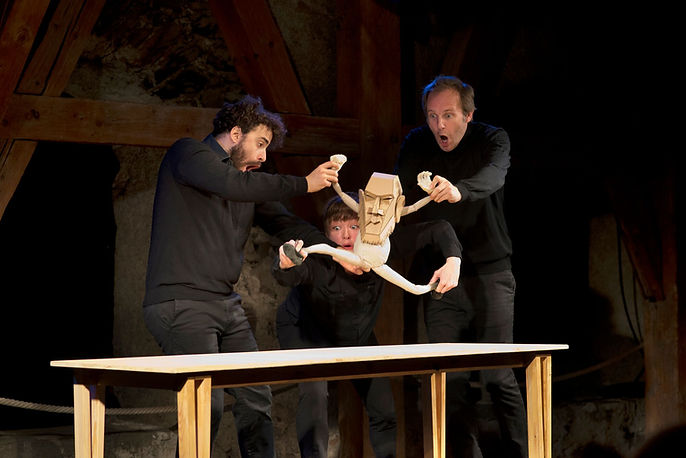
A little while after that, with Animations Online up and running, Penny made another introduction: Beccy Smith, also an ex-student, who was going to come to work with Penny at Puppet Centre Trust, and would get us some funding. And that’s what happened – the young Beccy was soon raised up to the lofty heights of Director of PCT, and did indeed bring in some much-needed income for the Centre and for its publication, Animations, which we were now talking about developing further, with an annual review, Animations In Print, being mooted.
‘Penny was a compelling person who inspired many of us during her time at Central,’ says Beccy, ‘We learnt the value and relevance of puppetry as a contemporary artform through a combination of relentless critique and unstinting loyalty. Like many others, I owe what has become a rewarding career in puppetry and producing work to her. At the Puppet Centre she was a rigorous champion for the artform and a truly inspirational mentor, driven always by the potential for excellence she could discern in new work and new people. What I loved most, however, was her sharp mind (and tongue) and sense of fun. Fearless combatant in the art of The Parson’s Cat and game player of ridiculous murder mysteries (her Frazzle the Clown was unforgettable, darling!) but often beaten in the game of Find the Car. She modelled a unique way of contributing to culture and community.’
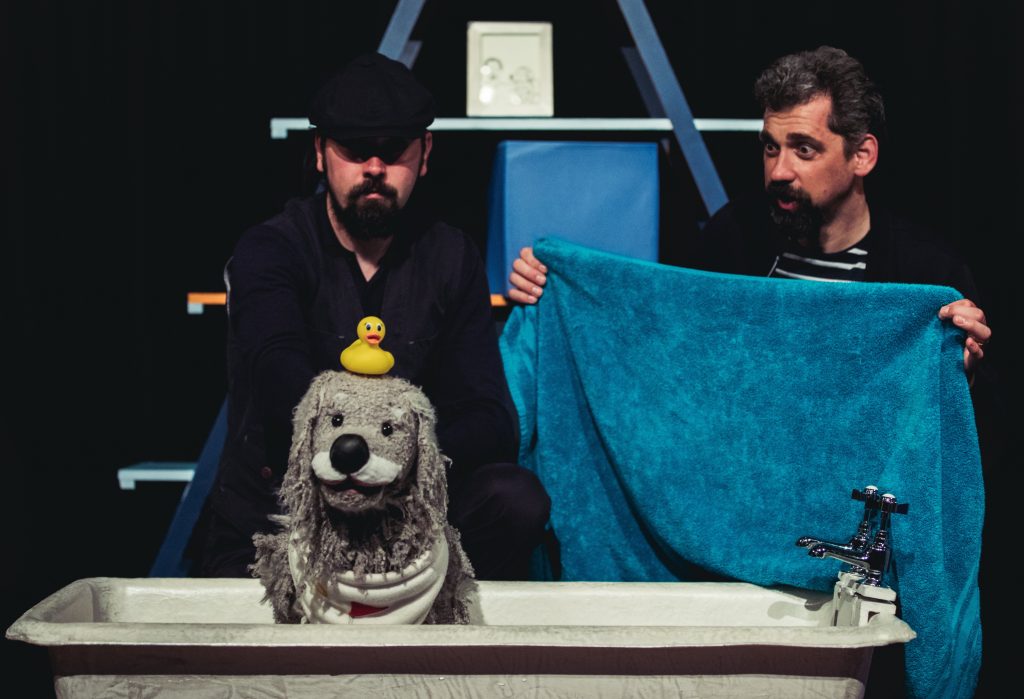
Penny, Beccy and I worked together for many years on Animations Online and Animations in Print – and Beccy and I continue to work together on Total Theatre Magazine, which Penny contributed to regularly from its founding in 1989 until 2018.
Penny and I shared duties on numerous panels and talks about puppetry and animation, across the UK. There was many an outing to see shows together. We went to the London International Mime Festival, to Visions Festival, to The Little Angel Theatre, to Riverside and the Southbank and of course to Battersea Arts Centre. With Penny, I met many of the world’s leading puppeteers and puppetry companies.
We often socialised together, going out for lunch or dinner in London, or going to parties at Beccy’s house in Brighton, which she shares with her husband and collaborator in Touched Theatre, Darren East.
During the various lockdowns of recent years, Beccy switched her legendary murder mystery parties to Zoom, and Penny would participate, determinedly staying in character as Miss-Lost-Her-Marbles or whatever as she struggled with the technology: ‘I can’t see you! Where have you gone?’ was a frequent cry.
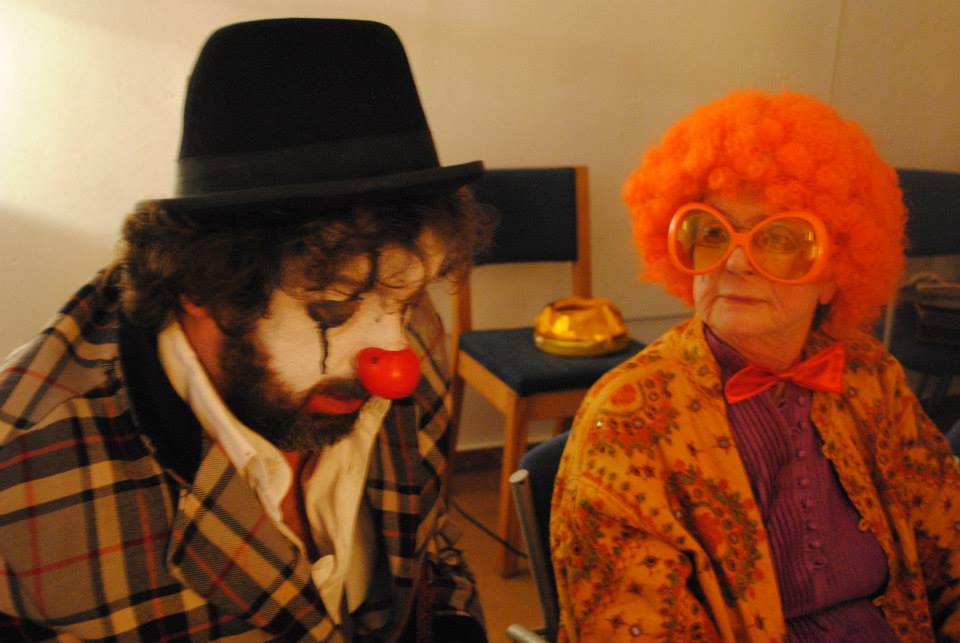
Another of Penny’s students was Rachel Riggs, who co-founded DNA puppetry company after leaving Central, and who also went on to be a close friend, a relationship that blossomed from when they met in the Green Room in Manchester 30 years ago, through the Central years and beyond into professional practice for Rachel in both the UK and Australia; continuing right to the end, with Rachel helping to care for Penny in her final days, then joining granddaughter Kati Tārā in the arduous task of clearing Penny’s house and re-distributing her precious books and puppets.
‘Penny was my mentor, and she changed my life,’ says Rachel. ‘When I met her she said, “You absolutely have to come on this course I’m starting at Central School of Speech and Drama – you must, darling, you must!” So I did, and one month later, sleeping on my friend’s floor in a flat in Hampstead, I was enrolled and a real student of puppetry – she made my dream come true… We had a year of amazing experiences, training of the highest quality with master puppeteers in theatre and television, the whole wonderful world of puppetry opened like a magic box of delicious tricks, and we were the luckiest students alive! She took us to the festival at Charleville Mezieres, to perform our student group show, and to experience the amazing universe of international puppetry for the first time. Penny was my fairy godmother, and she lit up the world for me… She demanded proper representation and professional education for puppetry – an artform often seen as being only for children. In an often male-dominated arena of Punch & Judy professors and Machiavellian-minded puppeteers, Penny was a strong and determined woman.’
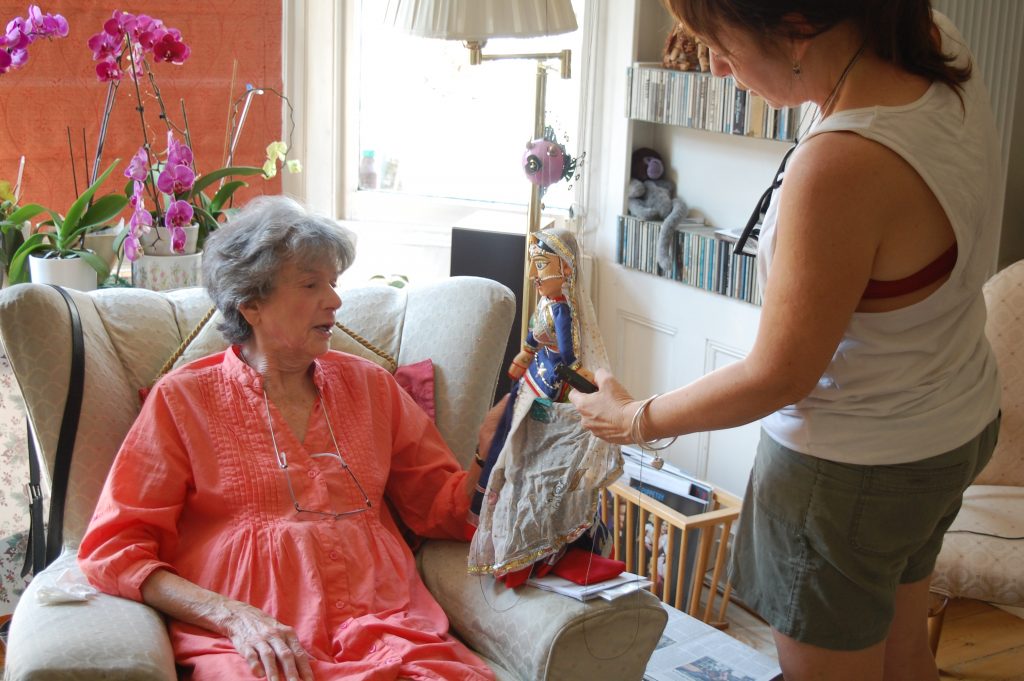
Penny Francis was born Penelope Ann Elsdon-Smith in Kolkata in India on the 17th of April 1931. She was an only child, and she attended the Hilltop School in India, before being sent to the UK to complete her education at Cheltenham Ladies College, where her favourite subjects were athletics and dancing. She was, it is said, extremely good at performing even at that early age. She left school at 18 and started a degree in Spanish at Kings College, but left to go onto the stage.
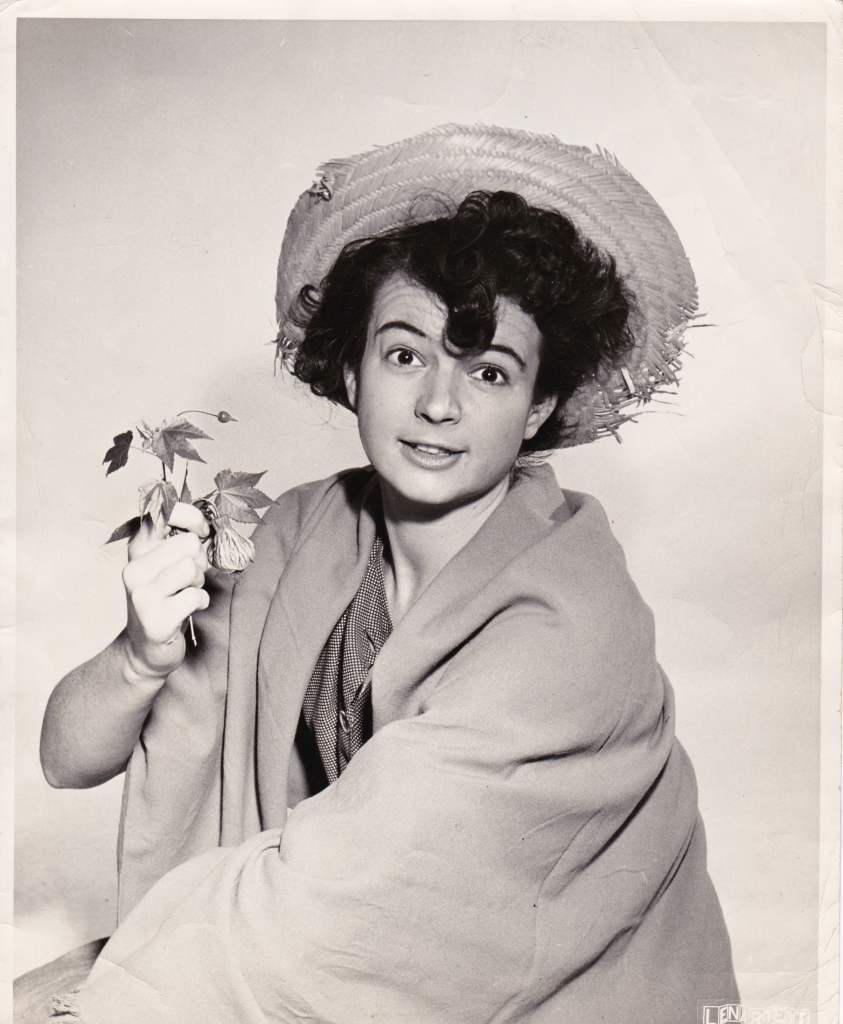
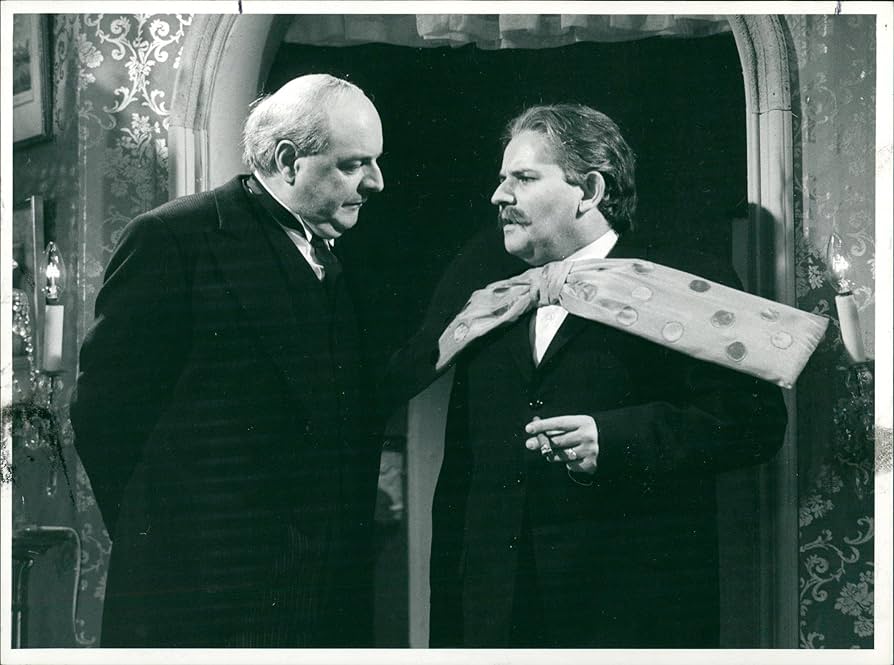
In 1954, she married her husband Derek Francis whilst they were both working at the Oxford Playhouse. They subsequently set up home in South West London; a home described by Derek Parry, family friend and celebrant of her funeral, as an extension of the West End – replete with its own puppet theatre, and an ever-revolving cast of actor friends (Ronnie Barker was best man at Penny and Derek’s wedding). Penny was widowed in 1984 when she was 53. The couple had two children, Tessa and Julia (sadly, Julia died in 2008) and a number of grandchildren and great-grandchildren.
Puppeteer Ronnie le Drew was a longterm friend of the family:
‘I first met Penny In the early 1960s. I was taken to Penny and Derek’s then-home in Putney. I saw a wonderful production of the Christmas story, performed by Penny and Derek for their two girls, Tessa and Julia.’
Penny was a renowned actress and Ronnie describes Derek as ‘a brilliant character actor, not only on stage, but in television and film, and an amazing puppet maker and designer’.
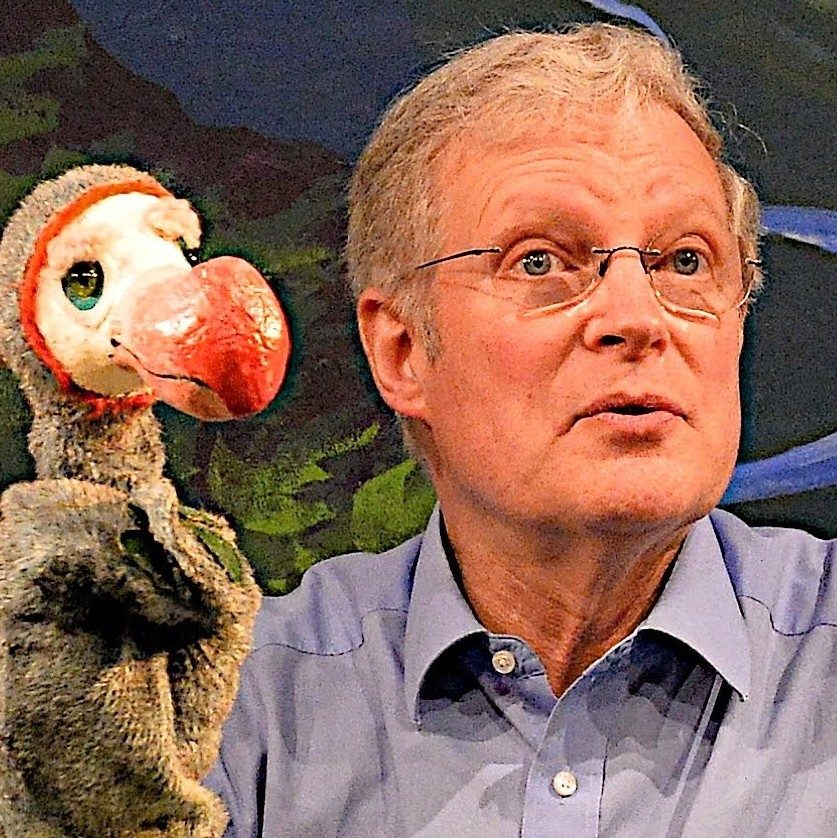
Seeing this performance was the start of a very long friendship for Ronnie and the Francis family. He continues the story:
‘Penny was such a vibrant and passionate woman, and it wasn’t long before she got involved with the puppetry organisations – she had given up her acting career to look after her children, but now her passion and vitality was channelled into puppetry. And it proved immensely helpful to us struggling puppeteers, for she made connections with the Arts Council of Great Britain and other funders. It wasn’t long before she had organised an International Puppetry Festival in London, the first of two. She then went on to co-found The Puppet Centre Trust which had two large rooms (at Battersea Arts Centre) dedicated to puppetry in all its forms; where there was a library of books and videos, and a permanent exhibition of puppets on show. Courses and talks soon took place, as well as performances by new professional puppeteers and established companies. The larger companies performed in the main auditorium of the arts centre. She joined the world puppetry organisation, UNIMA, and travelled to festivals around the globe, championing British puppetry and puppeteers, soon gaining respect globally from many of the world’s most famous puppeteers. She later became the patron of the Curious School of Puppetry, and attended and spoke at many of its events, always with humour and integrity. As she got older, I visited her at her home. Even if her body didn’t allow her to go to her beloved theatre anymore, her mind and humour never left her. She would say “Darling would you like a drink of wine? Just go downstairs and get some glasses…” and when I came back, she produced a bottle of wine which she’d kept by her seat for the occasion.’
Penny was so beloved of so many people within the puppetry and visual theatre community. There follows a number of further reminiscences and appreciations from the people she worked with, taught, mentored and supported.
I think I speak for everyone when I say: we miss you, Penny!
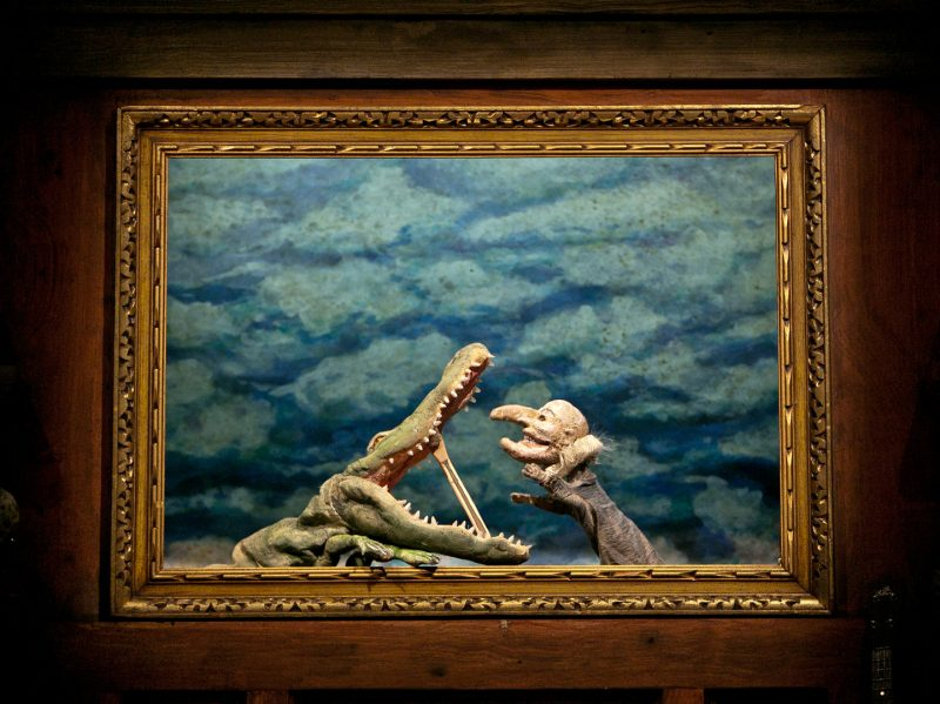
‘It seems inconceivable that Penny Francis, the great grandmother of puppetry, is no longer with us. Since the very beginning of my journey with the puppets, from The Ghost Downstairs to The Vinegar Works, Dr Faustus, Shockheaded Peter, Satyagraha, and My Neighbour Totoro, which we are working on right now, Penny’s presence was always there. At a time when puppetry was virtually ignored, Penny was a quiet supporter and loud advocate for the puppets. She connected us to a noble lineage that didn’t just know puppetry was more than trivial; it was a form that could go deeper, darker, more radical, and could say the things the humans couldn’t. Penny herself has now become part of that lineage, and her kindness and passion will continue to inspire us through the creativity, commitment, and love of the puppeteers she has supported and loved over the years.’ Phelim McDermott, theatre and opera director, Improbable
‘Many of my most treasured memories of Penny were formed in and around editorial meetings of Animations Online and Animations-in-Print. Penny consistently championed British companies such as Improbable and Faulty Optic that she admired and felt close to, while at the same time was constantly attentive to French and other European puppetry, and other puppet companies around the world. Her enthusiasm and openness to new forms and styles of puppetry were contagious.’ Matthew Isaac Cohen, Professor, University of Connecticut
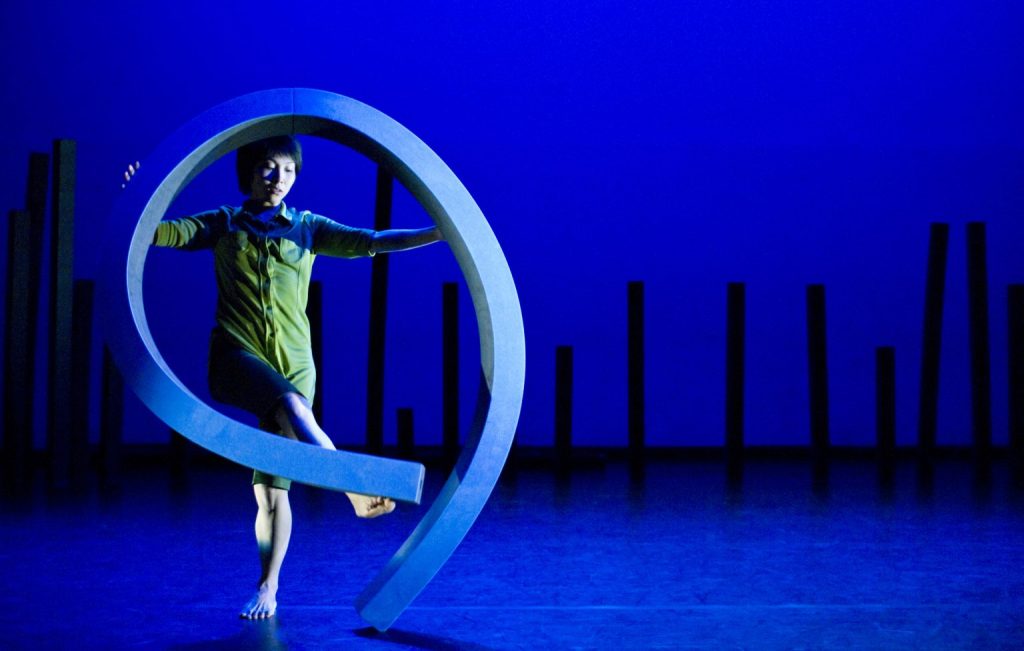
‘I met Penny at the Puppet Centre. She had previously supported my father’s puppetry act The Buckmaster Puppets and then went on to support me to receive the Puppetry Bursary. She continued to support me throughout my career, as she has done for so many people in the puppetry world.
We shared a birthday and a passion. She was an inspiration. Her dedication and achievements were so impressive. She will be very missed but her impact lives on.’ Sue Buckmaster, artistic director of Theatre-Rites
‘I was the first Education Officer at the Puppet Centre from 1989 – 1992, just out of teaching and new to London and arts world – I learned a lot from Penny. She was the best advocate for puppetry and widening understanding of its possibilities in theatre, performance, education and training. She was funny and inspiring and wove her way uniquely through the world. She will be much missed.’ Anna Ledgard
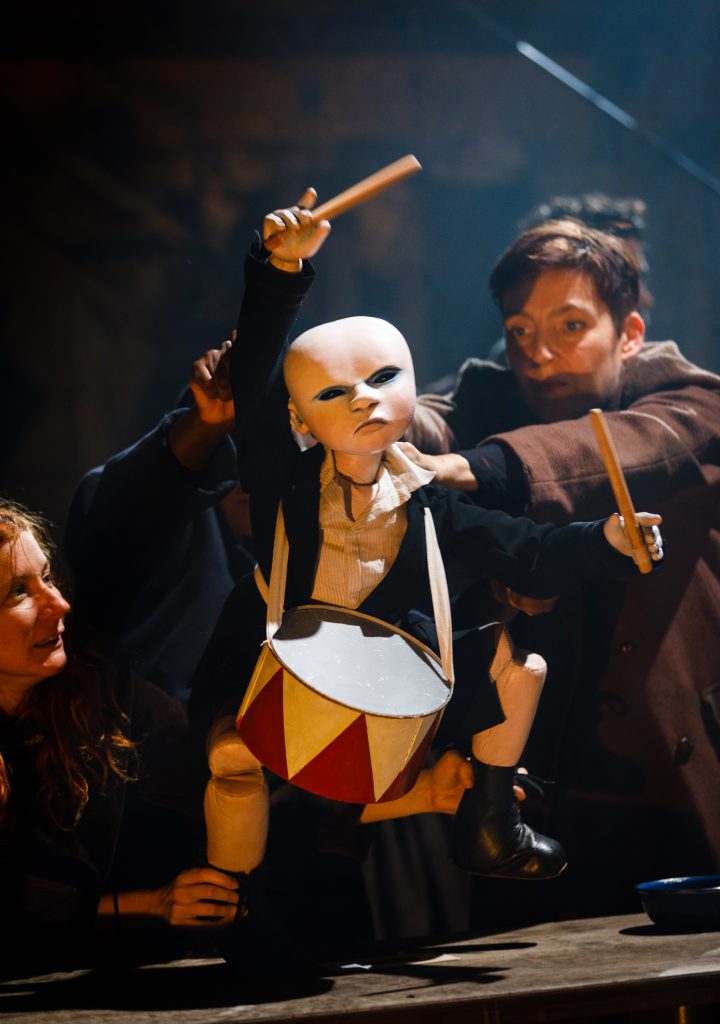
‘As a dear family friend, Penny was a part of every pivotal moment of my creative life. She most importantly supported, as advisor and Patron, the founding of Curious School of Puppetry. Penny delighted in meeting young puppeteers – artists whose passion for puppetry mirrored her own and who gave her energy and hope for the future of the artform she loved so dearly. I miss her deeply, her boundless positivity and her joy in people. Penny and my dad (John Wright, co-founder with Lyndie Wright of the Little Angel Theatre) would both attend any event, say yes to any opportunity, and encourage me to do the same saying, “Go, do it, you never know who you might meet!”’ Sarah Wright, puppeteer and director of the Curious School of Puppetry

‘Penny was probably one of the first people I met in the puppetry world, when I was still an actor and she was heading the puppetry course at Central. When I finally stepped onto the puppetry ladder to work with Christopher Leith in 1997 at the Little Angel, Penny was right behind me. She encouraged and mentored me throughout the next 20 years, seeing every single show I was in and having constructive stuff to say about all of them – well, nearly all! She knew what worked and what didn’t, and didn’t hold back if something wasn’t working for her. She had boundless energy and enthusiasm and was generous with her extensive knowledge. She supported me and everyone else who was part of this world of puppetry and animation, whether they were just starting out or at the top of the tree.’ Mandy Travis, actor, puppeteer and musician
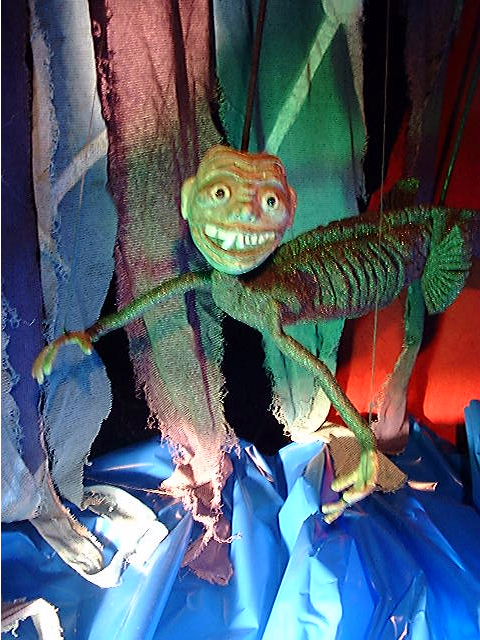
“It was early 1990. I had studied for a Bachelor of Theatre and worked full time for a puppet theatre for two years in Australia. Newly arrived in London, I asked around for information about the puppetry scene in the UK. Very quickly I was told to speak to Penny Francis, particularly as I was keen to see the inaugural graduating class at ESNAM in France. Penny immediately offered me a lift in her car, so I got on the ferry at Dover as a pedestrian. Penny, with her usual generous spirit, found me lodgings, and introduced me to her European colleagues – and a firm friendship was born. Penny was a powerhouse. For thirty years she encouraged me to keep trying, keep improving. Penny did more to advance and promote the status of puppetry as an artform and the skills of the puppeteer than anyone I have ever known, and likely ever will.” Adam Bennett, puppeteer, co-founder DNA
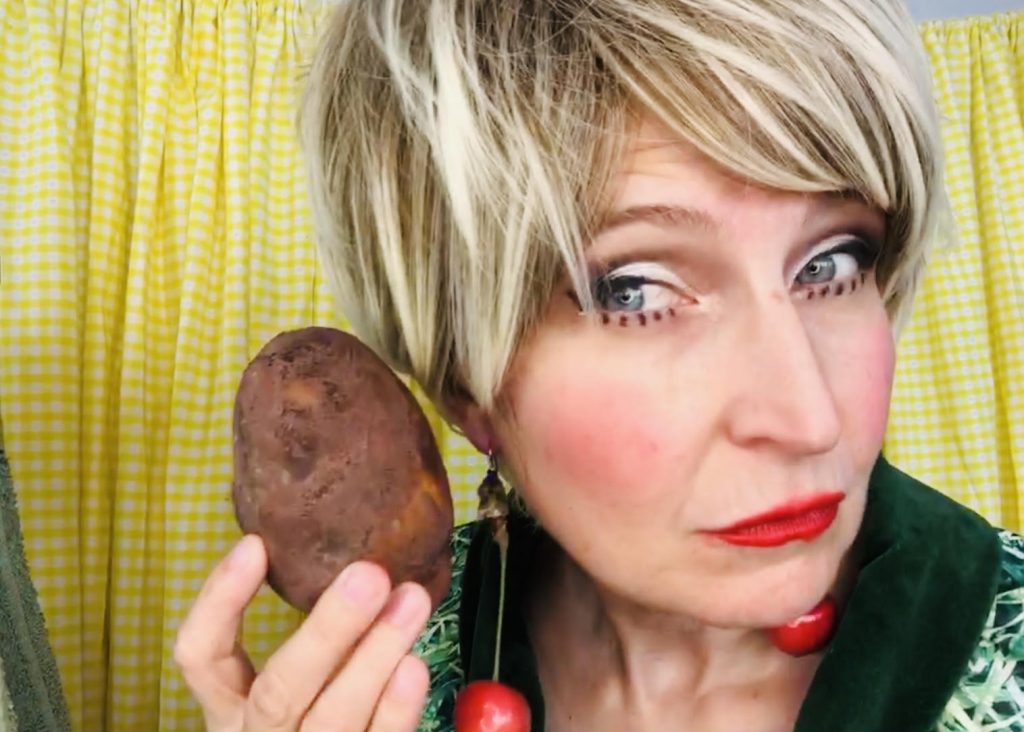
‘Penny was puppetry royalty and an absolute gem of a person, dedicated to the sector and determined to raise up both established and new puppeteers. I had the joy of being interviewed by her at the very start of my career for Animations Magazine and it was a joy and inspiration to speak to someone so knowledgable and kind. We kept in touch through the years and she continued to be supportive of my work (she even appreciated soap I made her). People like Penny are rare. It’s so sad we have lost her but she will shine on in all who knew her.’ Shona Reppe, theatre-maker & puppeteer (and soap maker)
‘Penny was very serious about the things that bring light to people’s lives. Theatre for example. She knew the power of the puppet as storytelling master/mistress in her very bones. In a hotel room in Poland, where we were attending an international puppetry festival, she told me over a glass of vodka: “Never forget. Puppets can express things that are too unbearable to utter one moment, leaving you heartbroken, and then double you over laughing with their nonsense and joy the next.” She stayed in touch all the years beyond my time as a student at Central. Although for some reason the Xmas cards I sent her each year were almost annually returned to me in March, despite her insistence that I had her correct address. How very Penny. An international woman of Festive mystery. She gave us an olive tree when we got married. That meant a lot. One of the last times I spent with her in the flesh she was dressed as a clown with orange hair and never broke character. 100% present in every moment. That is how I will remember Penny Francis.’ Zoe Hunter, actor, writer, and puppeteer
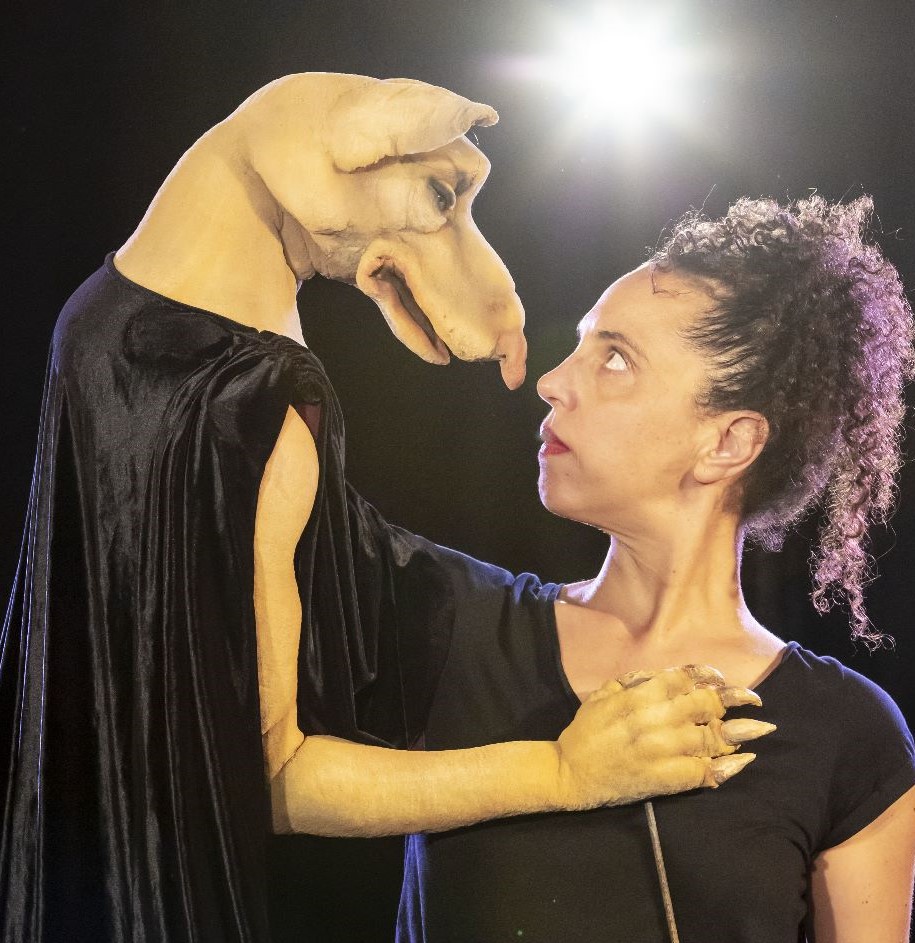
‘I first met Penny during my audition for Central’s MA in Advanced Theatre Practice. At that point in my life (1999), I was in the midst of a soul-searching journey, grappling with questions about my artistic identity. I had explored various facets of performing arts, including acting, mask work, physical theatre, and dance, but none of them seemed to offer me a true sense of belonging.
‘Penny inquired about my past experiences in theatre, and as I shared my journey, she remarked: “Well young lady, you are a puppeteer!” Penny held belief in the visual ideas I harboured, even when I doubted myself. Her encouragement empowered me to bring my artistic visions to life on the stage. I became a professional puppeteer. This gift she gave me remains with me all this years, influencing my theatre work. And Penny’s role as a tutor did not end with my graduation. She continued to ensure my ongoing personal and professional development. I am sure she did it with others as well. She had essential impact on a broader community; from her I got the sense that puppeteering is a kind of family.’ Avital Dvory, puppeteer and visual theatre director
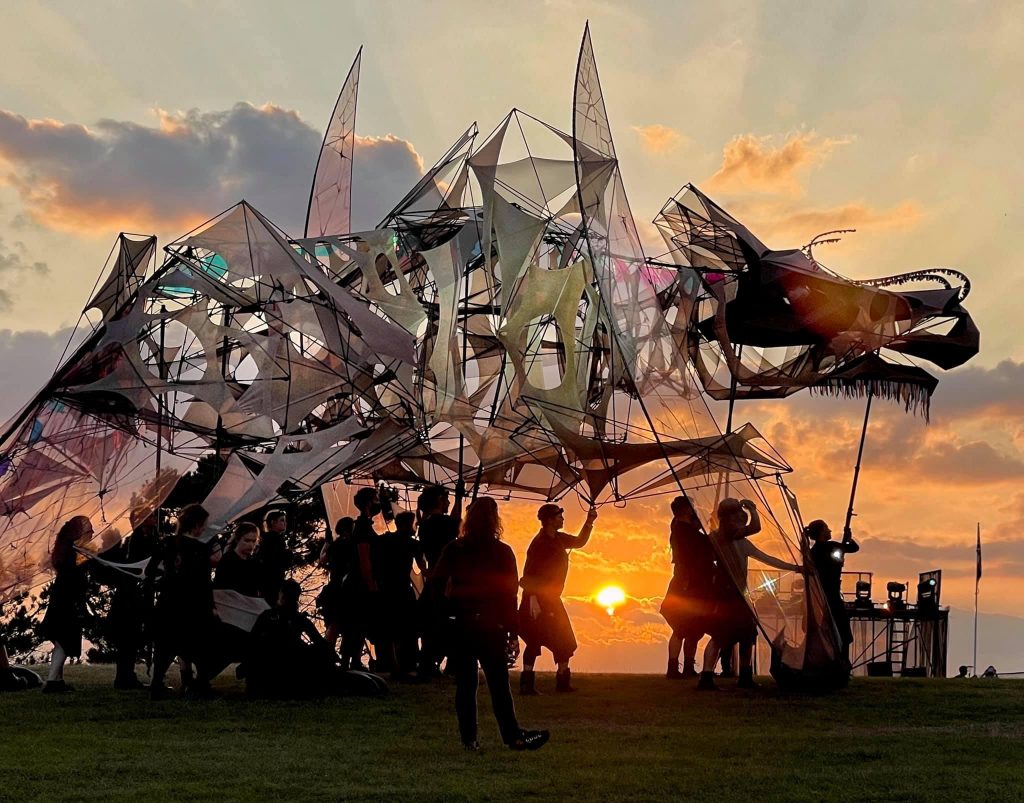
‘Penny was one of the first people I encountered at the Puppet Centre when it had a physical space in BAC in the 1990s. I met her first as a theatre-maker curious about puppetry, later as an applicant for Puppet Centre bursaries and schemes that would profoundly influence and transform my career, as they did so many others. Penny managed to combine being an extraordinary enthusiast for and champion of puppetry with being a phenomenally acute and perceptive critic. She set extremely high standards for herself and expected them from those around her. She encouraged participation but was most thrilled and excited by virtuosity, expertise, experiment, and the richness of the artform. It wasn’t possible to meet Penny without emerging invigorated, inspired, with a renewed sense of the importance of puppetry, and usually with two or three recommendations of shows to see – she was always keen to promote the work of emerging artists and companies of note.’ Mervyn Millar, puppeteer and chair of the Puppet Centre Trust
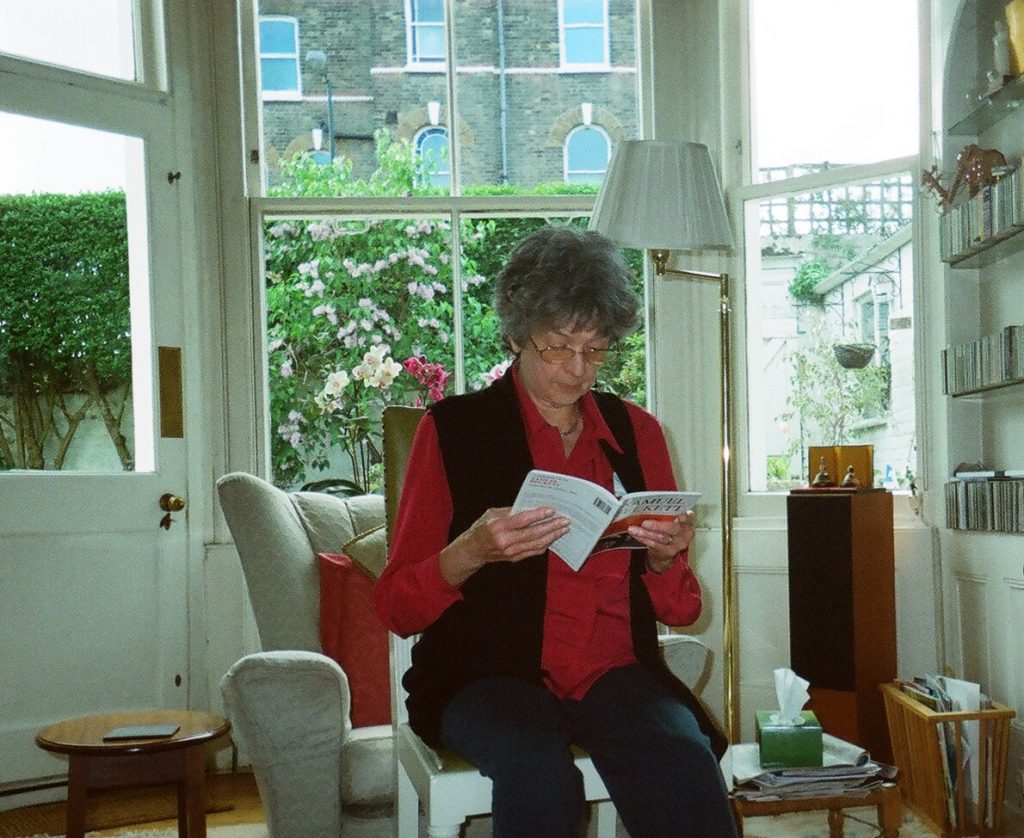
Finally, let’s remember Penny on the occasion that her professional life went full circle, performing one last time with former student Mischa Twitchin, a director and dramaturg, and co-founder of Shunt, the renowned ensemble company that grew out of Central’s MA in Advanced Theatre Practice.
‘Thanks to the generosity of Luis Vieira and Rute Ribeiro, the wonderful directors of the Tarumba/ FIMFA puppetry festival in Lisbon, Penny made her return to the stage after many decades as the doyenne of puppetry in the UK – not on the main stage but directly below it!
‘In 2013, we played our Beckett show – In the Zone of Stones (with text drawn from Ill Seen Ill Said) – in the atmospheric space directly beneath the main stage of the historic Teatro San Luis in the heart of Lisbon. The low wooden ceiling was held up by wrought iron pillars, in between which we and the audience shared an extraordinary, intimate darkness. In this space, resonating then with Beckett’s narrative, Penny performed a solo “pantomime of memory” with a handful of objects taken from and returned to a small suitcase that she clutched to herself. We did only a few performances but it was all a wonderful experience – from rehearsing in Penny’s living room in Clapham to then participating in this international festival, where Penny was, of course, known to so many of the other artists performing.
‘The dinners during the festival were as much a highlight as the shows, full of the warmth and humour of Penny’s innumerable friendships. In this respect, her special relationship with Henryk Jurkowski should also be remembered. Amongst so many other projects, Henryk was editor in chief of UNIMA’s World Encyclopaedia of Puppetry and Penny worked tirelessly to make his research and insights accessible to an Anglophone readership, including through a second edition of the essays collected as Aspects of Puppet Theatre, now published by Palgrave (originally published by the Puppet Centre).
‘Perhaps the best word to evoke Penny’s presence might be, indeed, ‘animation’ – whether in the art of theatre or in personal relationships, and most often where these two were interwoven.’
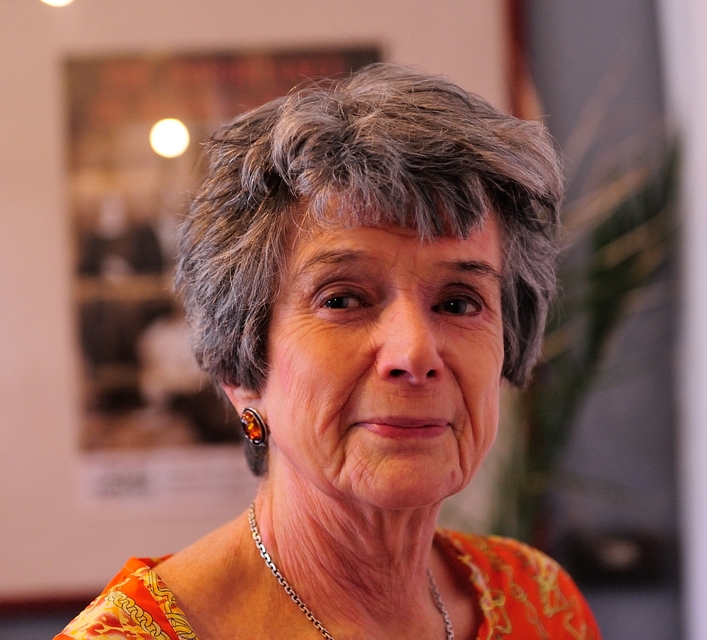
Penelope Ann Francis, born 17 April 1931 in Kolkata, India; died 29 June 2023 in London.
A film of the above mentioned performance, In the Zone of Stones (with text drawn from Samuel Beckett’s Ill Seen Ill Said), featuring Penny Francis, can be seen on Vimeo: https://vimeo.com/manage/videos/84826418
Puppetry: a Reader in Theatre Practice by Penny Francis is published by Palgrave Macmillan (2012).
The last article written by Penny Francis for Total Theatre Magazine, Puppetry in Performance, can be read here: https://totaltheatre.org.uk/archive/pathways/puppetry-performance
A memorial event to commemorate Penny’s life is planned for April 2024. Details will be published nearer the time on the Total Theatre Magazine social media pages.
Featured image (top of page) Silent Tide: The Adventures of Curious Ganz. Director Sarah Wright. Photo Steve Tanner.
